
项目位于山东日照岚山区巨峰镇,是中国南茶北引的重要地域。巨峰镇的朝元山是集中的绿茶种植产区,当地的绿茶产业在乡村振兴的大潮下,成为引领乡村振兴的重要支柱。受当地委托,拟在朝元山片区寻找适合激活改造的乡村空间,由此提升点亮这一乡村区域。
The project is located in Jufeng Town, Lanshan District, Rizhao, Shandong Province, which is an important region for China's southern tea introduction to the north. Chaoyuan Mountain in Jufeng Township is a centralized green tea planting production area, and the local green tea industry has become an important pillar leading rural revitalization under the tide of rural revitalization. We are commissioned by the local government to find a suitable rural space for activation and transformation in the Chaoyuan Mountain area, thus upgrading and lighting up this rural area.
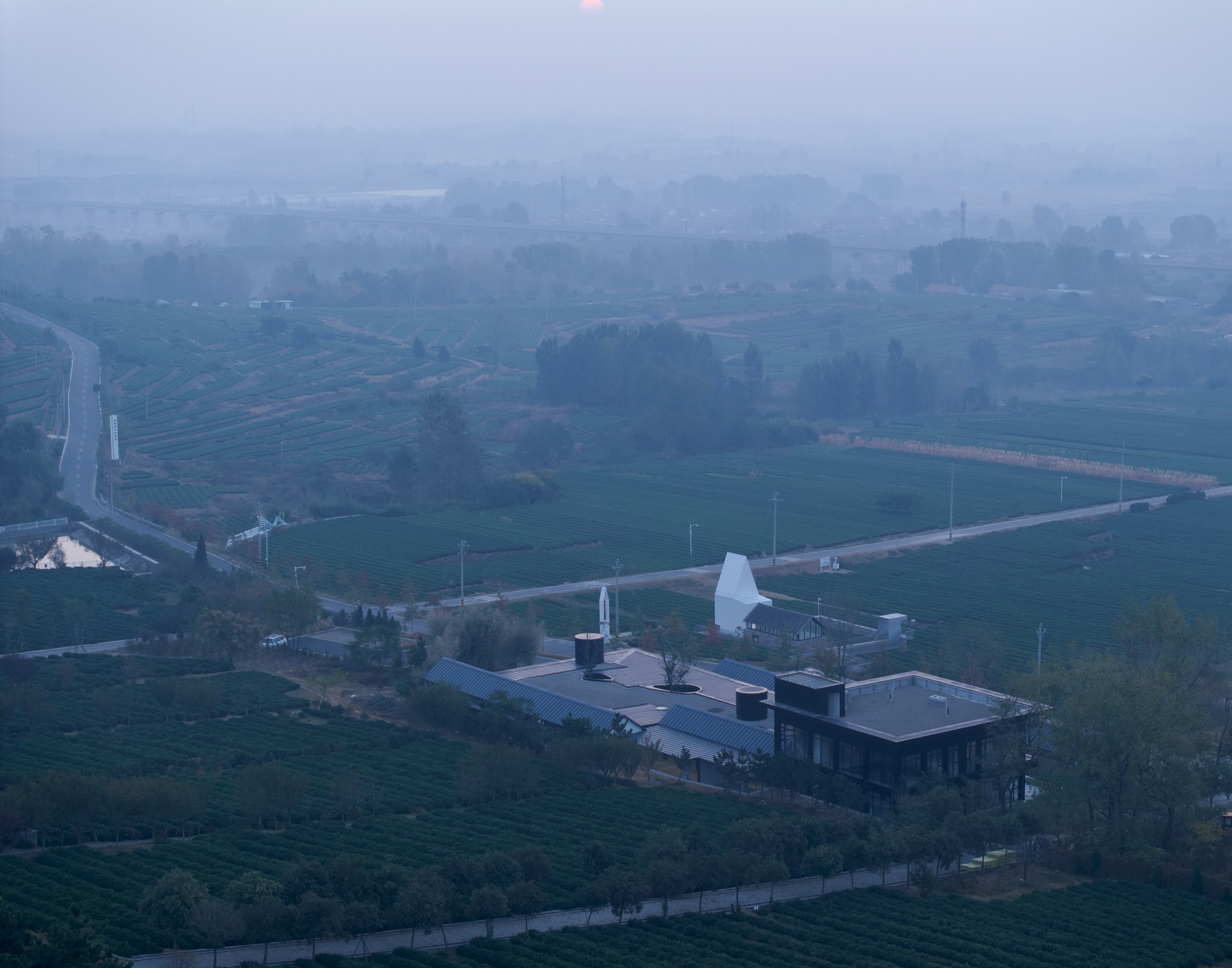
调研过程中,笔者在朝元山东南麓发现一片遗存的废墟老建筑群,这是一个已无人居住的遗弃自然村,在一片生长茂盛的杨树和槐树的杂木林中,残存着几栋破败的老石头房子,以及坍塌的废墟。这是一个被遗弃的自然村,早已人去屋空,废墟的命运有两种,一是随着时间的推移消亡,而是等待被改变。笔者建议改造这片废墟,改建为茶园中的会客空间,包含茶室、展厅、餐厅、民宿等功能,使之成为乡村中的活力空间:一个精彩实用的茶乡会客厅。原场地特征的保留也成为设计指导原则:保留场地内原始高差和建筑基础,保留有价值的老槐树和榆树,在原址上改建石头建筑,并增加建筑的高度和宽度,以适应新的需求;在遗留的老建筑废墟之上增加新建筑,新旧连接为一个整体。
During the research process, I found a piece of the old ruins of the ruins of the old building complex in the southeast foot of the Chaoyuan Mountain, this is an abandoned natural village has been uninhabited, in a piece of lush growth of poplar and acacia trees in the forest, the remnants of a few dilapidated old stone houses, as well as the collapse of the ruins. This is an abandoned natural village, long gone, the ruins have two fates, one is to die out with the passage of time, but waiting to be changed. The author proposes to remodel this ruin and convert it into a meeting space in the tea plantation, containing functions such as a tea room, exhibition hall, restaurant, and bed and breakfast, making it a vibrant space in the countryside: a wonderful and practical meeting room in the tea village. The preservation of the original site features also becomes the guiding principle of the design: preserving the original height difference and building foundations within the site, preserving the valuable old acacia and elm trees, reconstructing the stone building on the original site and increasing the height and width of the building to meet the new needs; adding new buildings on top of the remaining ruins of the old building, connecting the old and the new as a whole.
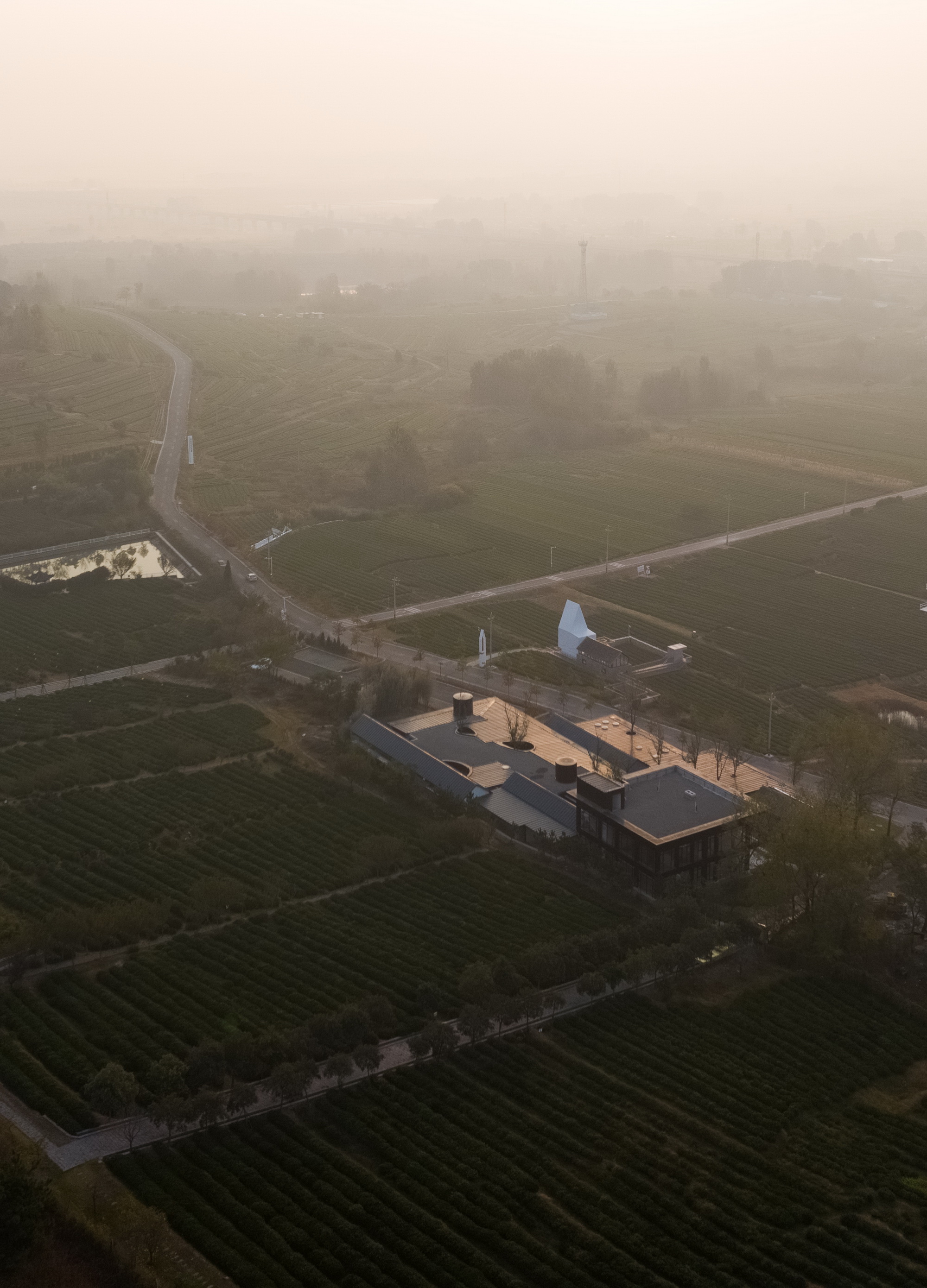
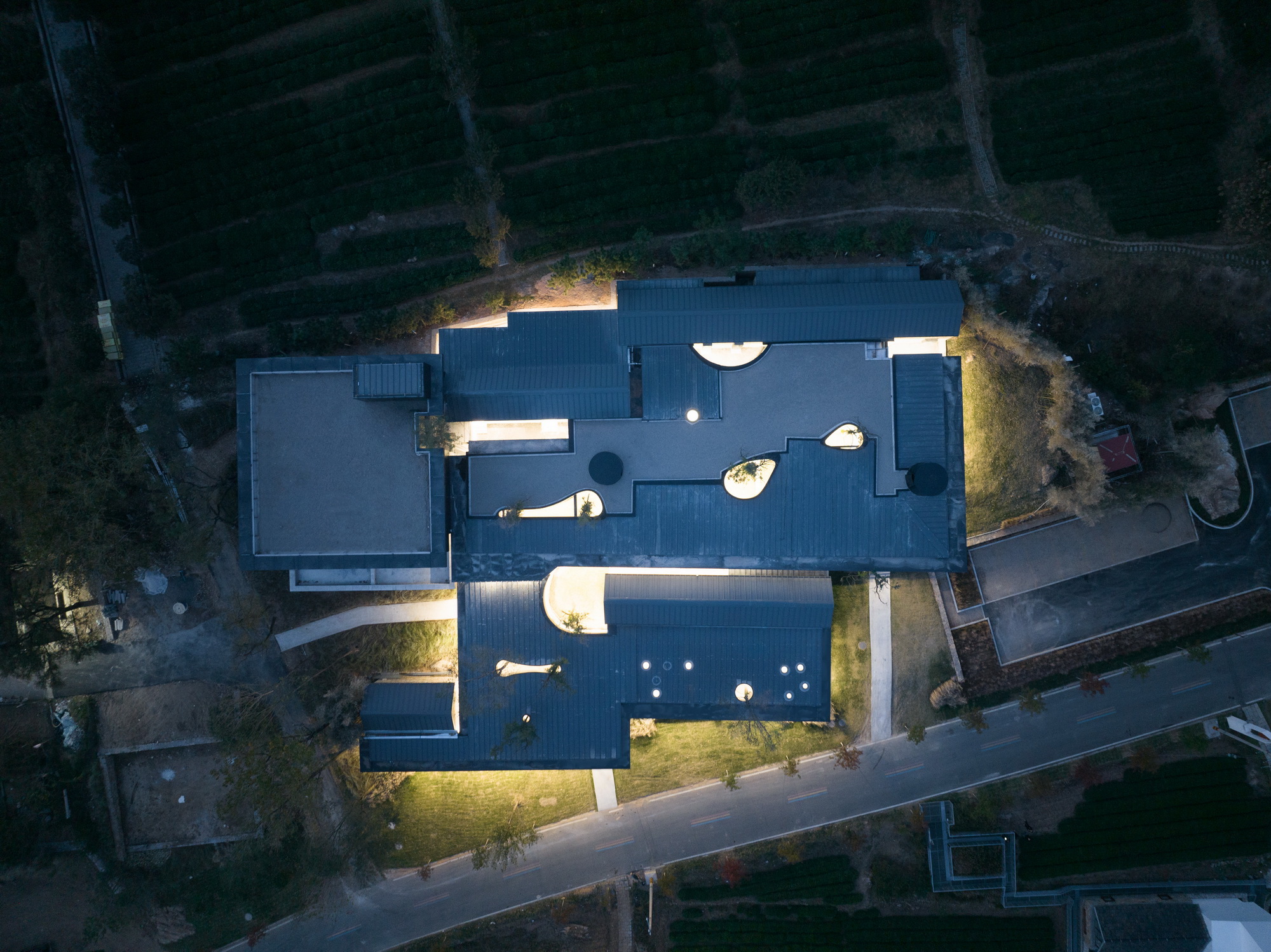
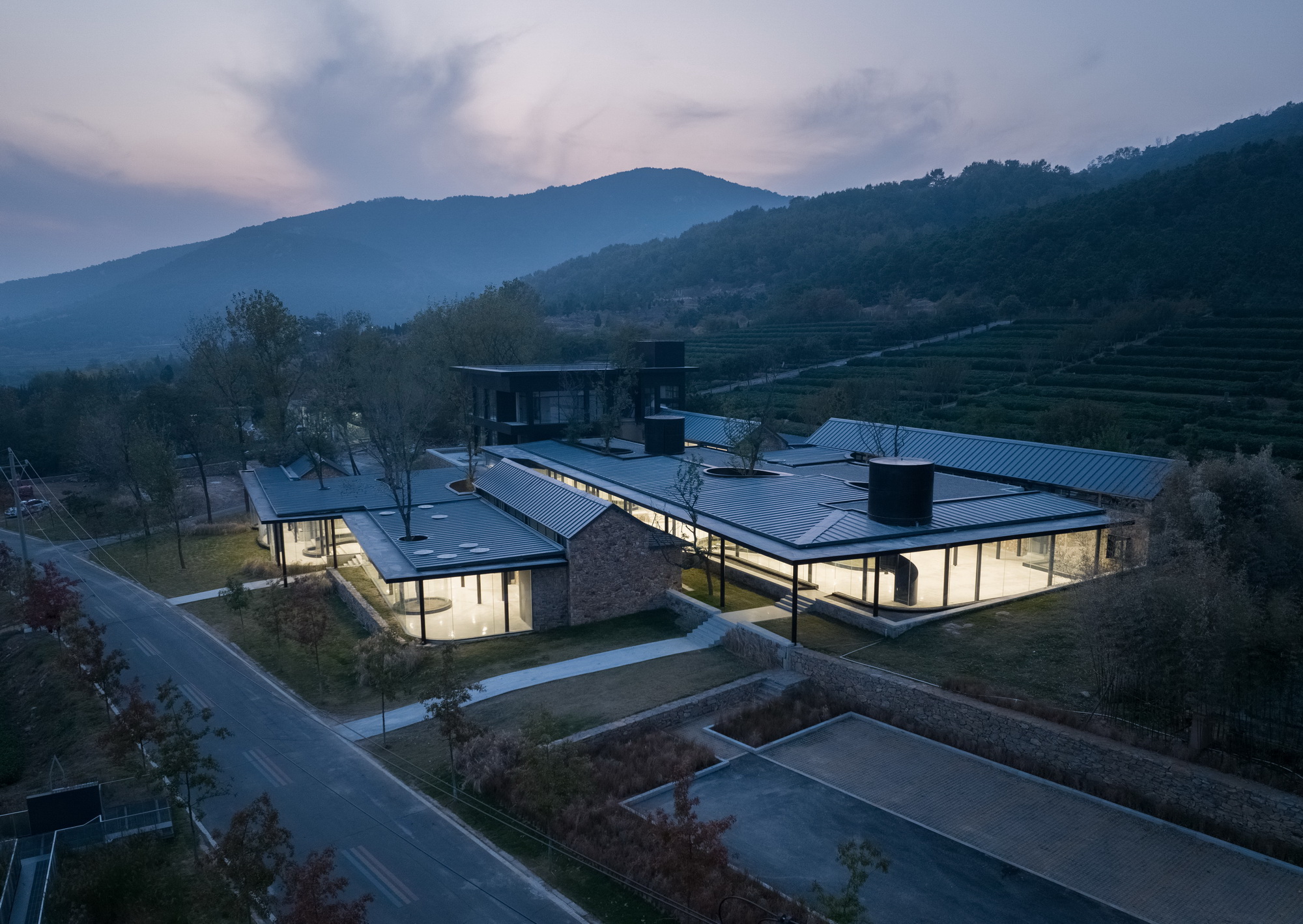
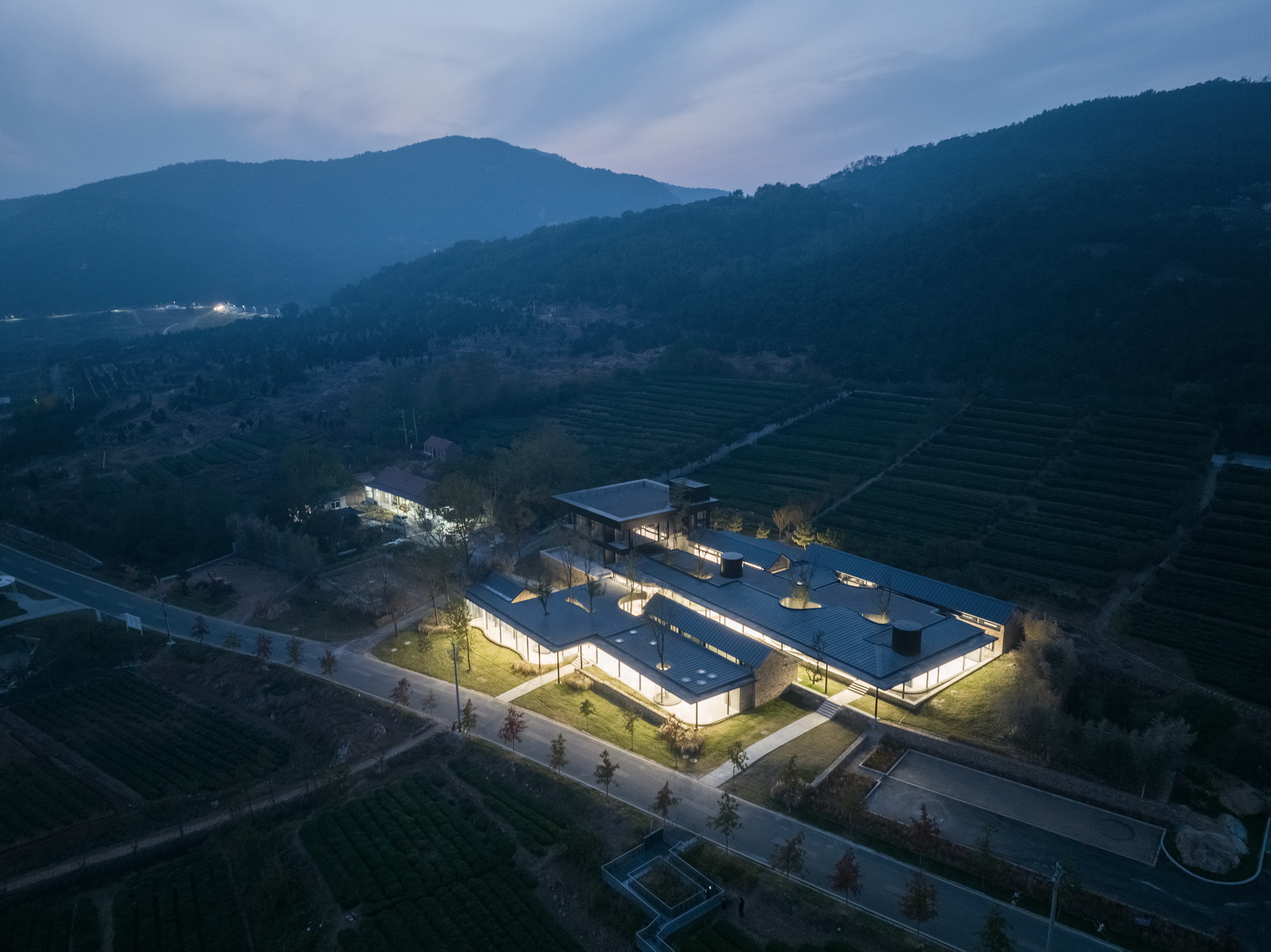
隐入自然的建筑
受朝元山层叠错落的田园和茶园启发,新建筑将田园的诗意融入作为目标,隐入到自然之中,并充分和自然对话。夕阳下原址废墟中大树在沧桑石墙留下斑驳的光影也成为设计意向。光影、自然、渗透、连接是设计的关键词。总图上一栋新建筑串联起六栋重建的老房子,共享的大屋顶撑起自由的建筑空间。建筑立面采用通透的落地玻璃幕墙,将最好的室内视野留给周边的田园风光。新建筑融合在乡土建筑和周边田园之中,流动空间和纯透幕墙使一览无余的茶光山色里外渗透,实现了对自然和乡土最大的尊重以及深度的对话。
Inspired by the cascading fields and tea gardens of Mt. Chao Yuan, the new building aims at the poetic integration of the fields, stepping into the nature and fully dialoguing with it. The dappled light and shadow left by the large trees in the ruins of the original site on the stone wall at sunset also became the design intention. Light and shadow, nature, penetration and connection are the key words of the design. In the master plan, a new building connects six old houses, and the shared roof supports the free architectural space. The façade of the building is made of transparent floor-to-ceiling glass curtain wall, leaving the best interior view to the surrounding rural scenery. The new building blends in with the vernacular architecture and the surrounding fields, and the flowing space and transparent curtain wall allow the unobstructed view of the tea and the mountains to permeate both inside and outside, realizing the greatest respect for nature and the vernacular and the depth of the dialogue.
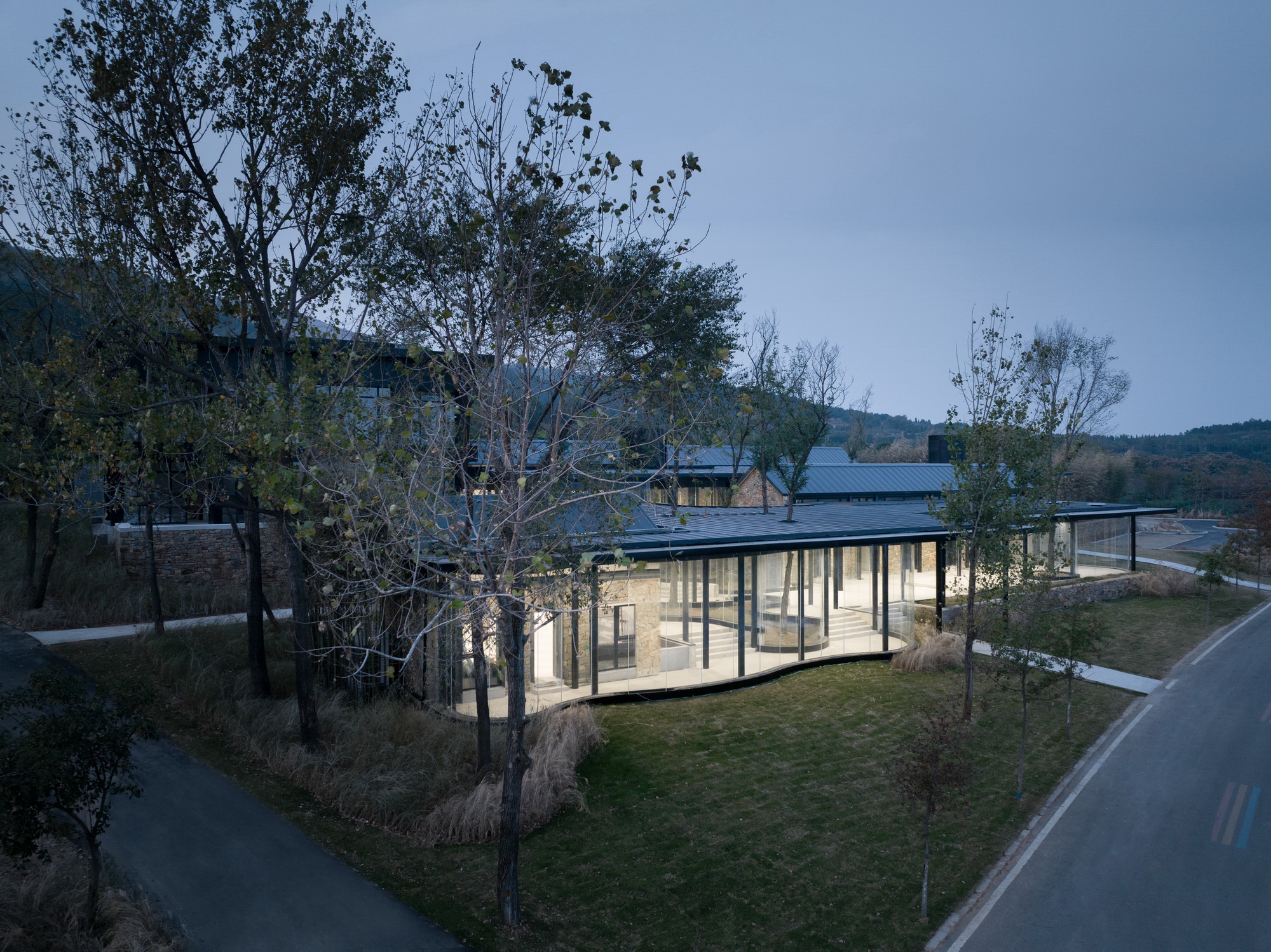
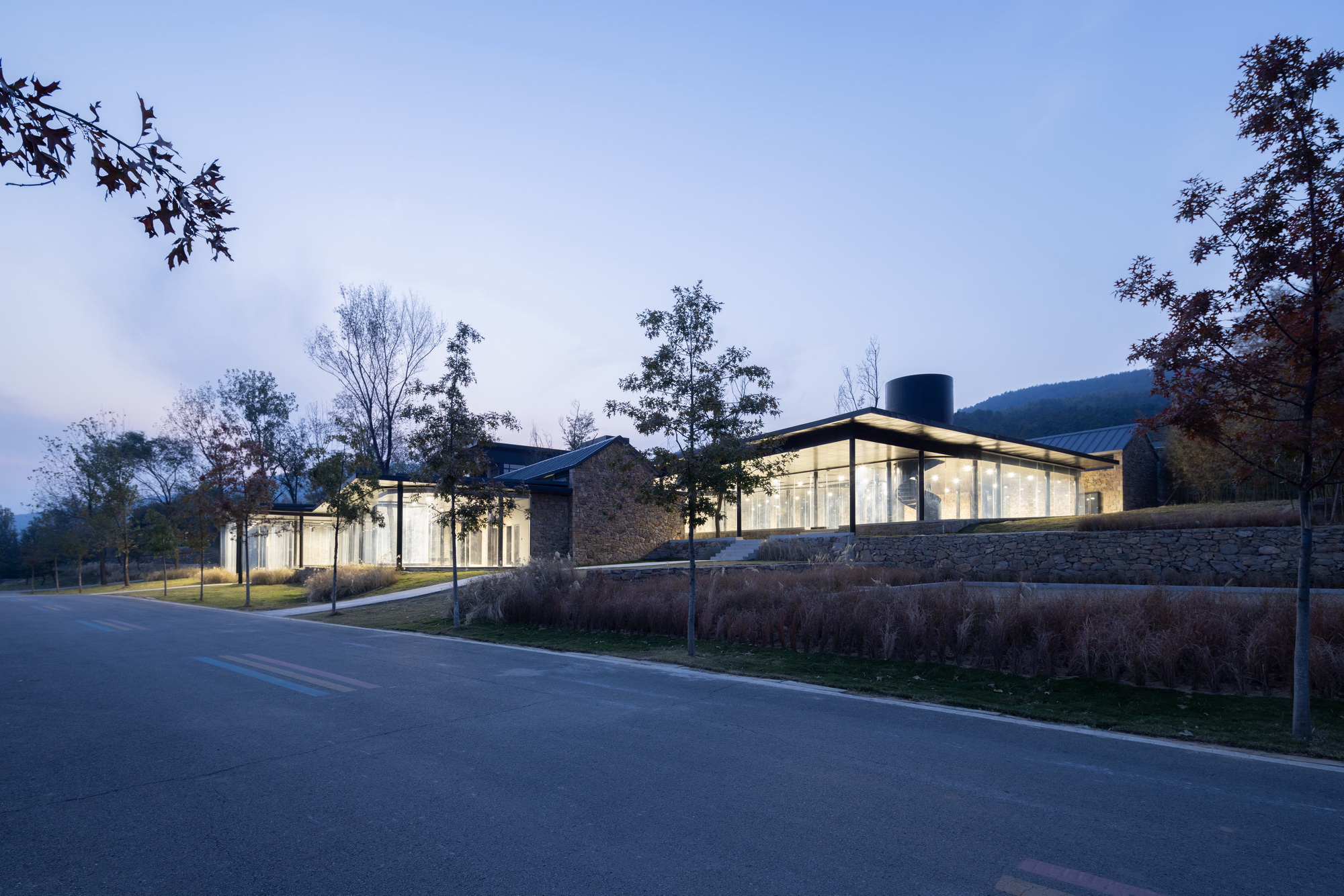
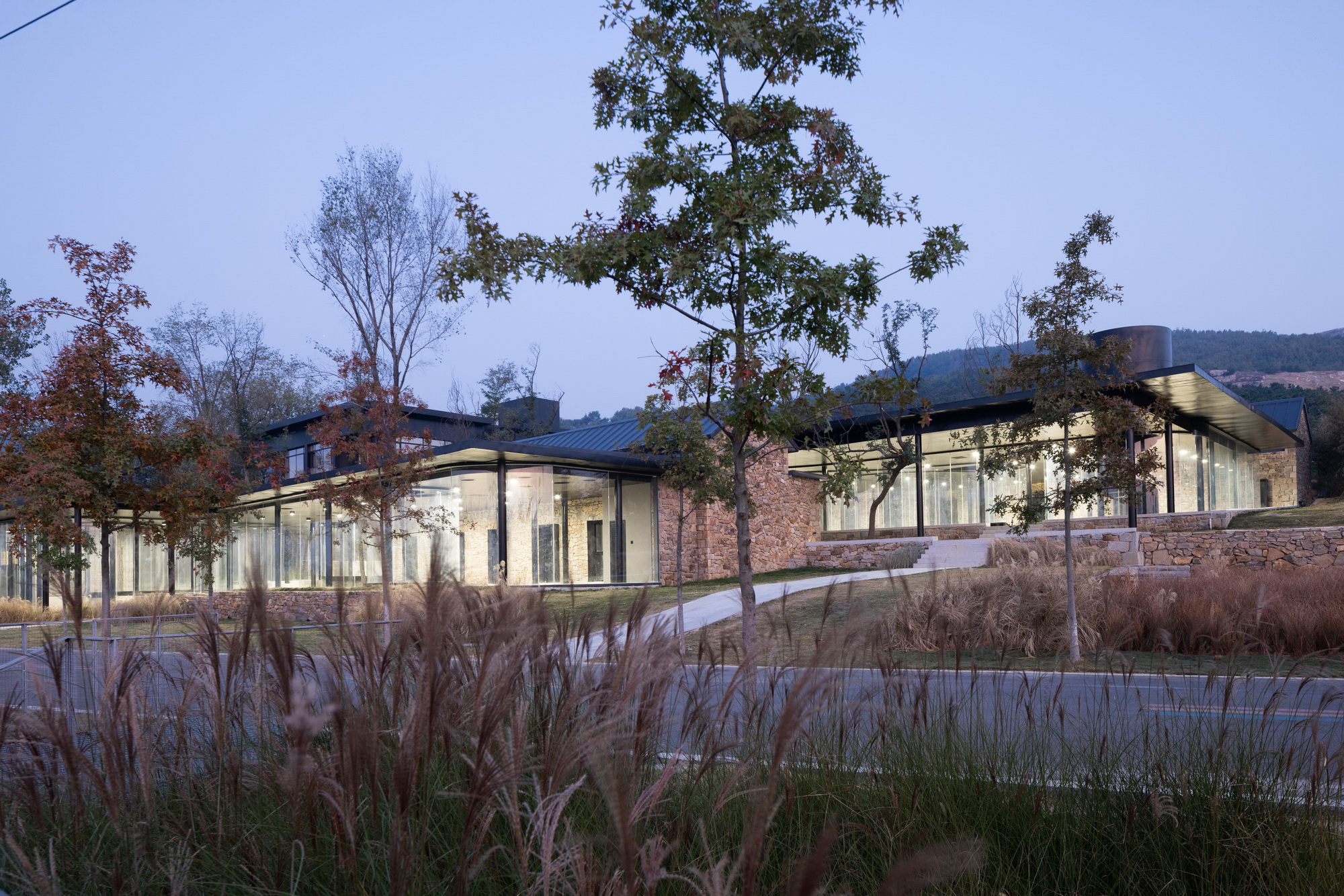
成为光的容器
无处不在的光,是整个建筑设计及建造的重点。第一是自然光,透过外墙落地玻璃,从黎明破晓到落日黄昏,光顾整个建筑内部;第二是建筑中庭的天光和阳光,因保留的大树枝丫遮挡,洒落一地斑驳摇曳的树影光;第三是老建筑的石墙处特意留出的采光顶,通过计算的角度和开口,在这里接受斜阳暖黄色的石墙光影;第四是建筑内部曲面玻璃,通过平立的错落折射出丰富的自然光;第五是粗糙朴素的水磨石地面反射出的细腻温柔的地面光。建筑自由舒展的平面形成由亮及暗的空间,加上大树的树荫,形成空间上的阴翳美学。新建筑成为光的容器,一天中的不同时间,都可以感受到不同的光影变化。
The ubiquitous light is the focus of the entire architectural design and construction. Firstly, the natural light, through the floor-to-ceiling glass of the exterior wall, from dawn to dusk, patronizes the whole interior of the building; secondly, the sky light and sunlight from the atrium of the building, which is shaded by the retained branches of the big trees, spilling out the dappled and swaying light of the tree shadows; thirdly, the light roof purposely left at the stone wall of the old building, where it receives the warm-yellow light and shadow from the slanting sunlight of the stone wall by calculating the angles and openings; fourthly, the curved surface of the interior of the building The fourth is the curved glass inside the building, which refracts abundant natural light through the staggered flatness; and the fifth is the delicate and gentle ground light reflected from the rough and simple terrazzo floor. The freely spreading planes of the building form a space of light and darkness, which, together with the shade of the large trees, creates a spatial aesthetics of shade. The new building becomes a container of light, where different light and shadow changes can be felt at different times of the day.
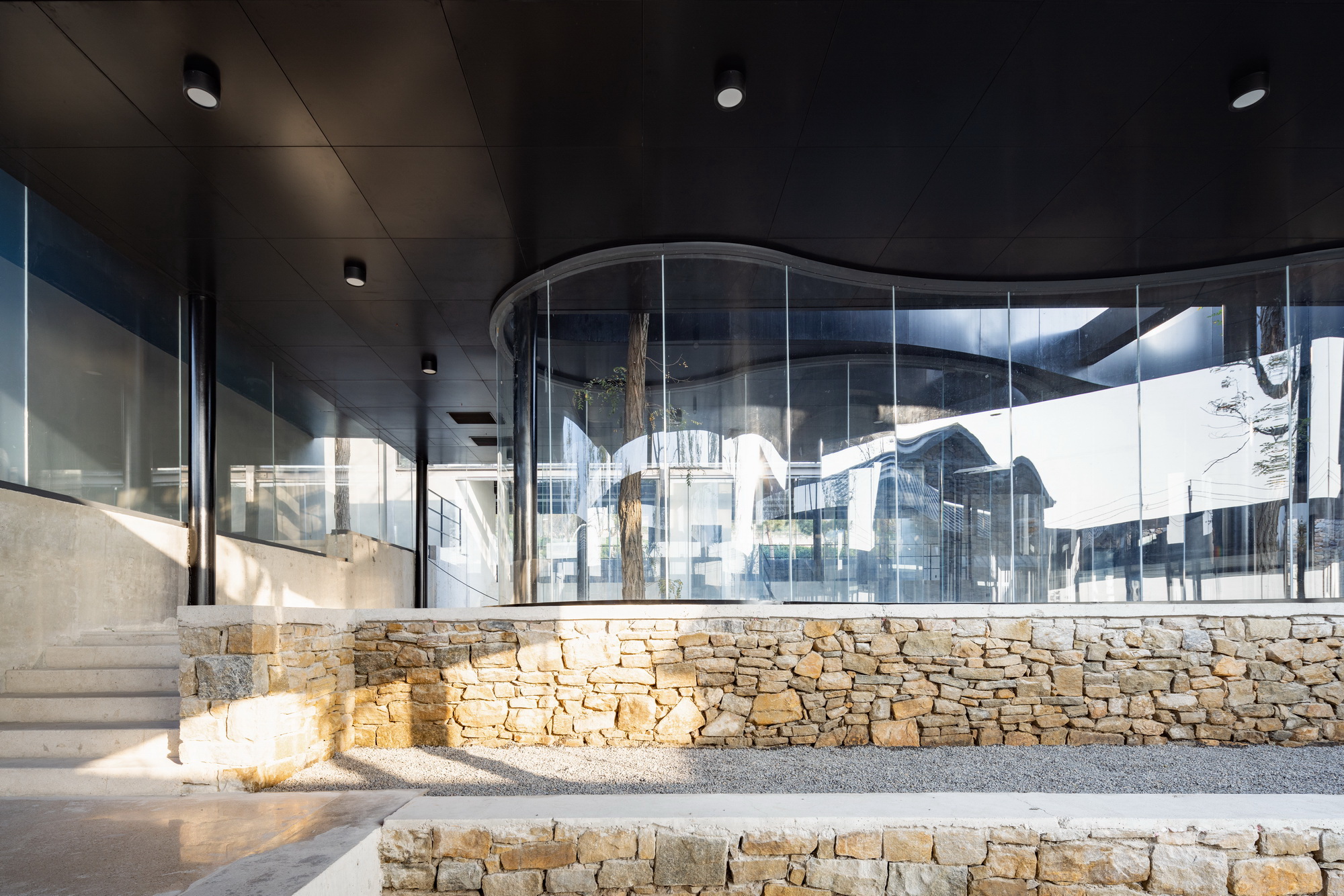
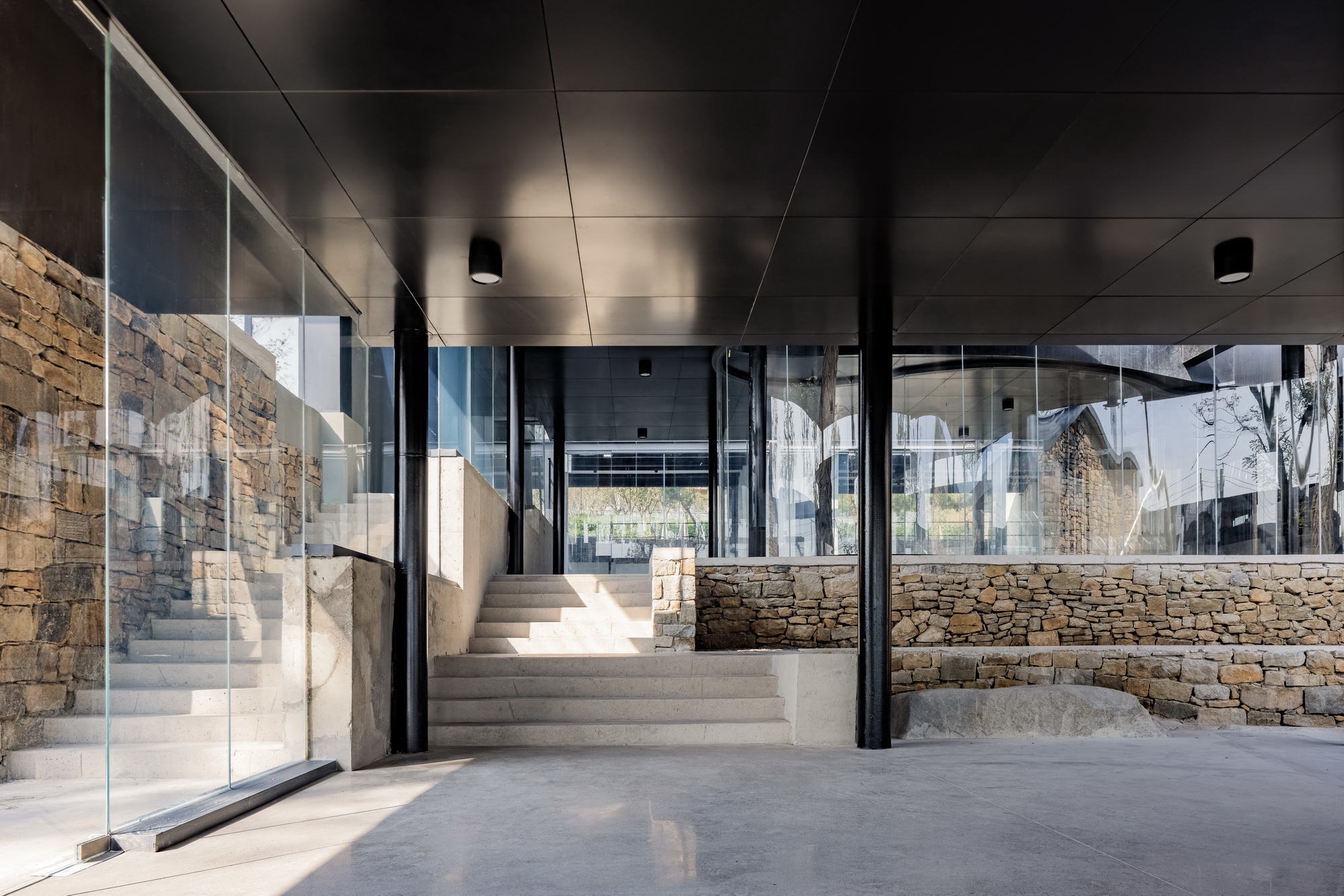
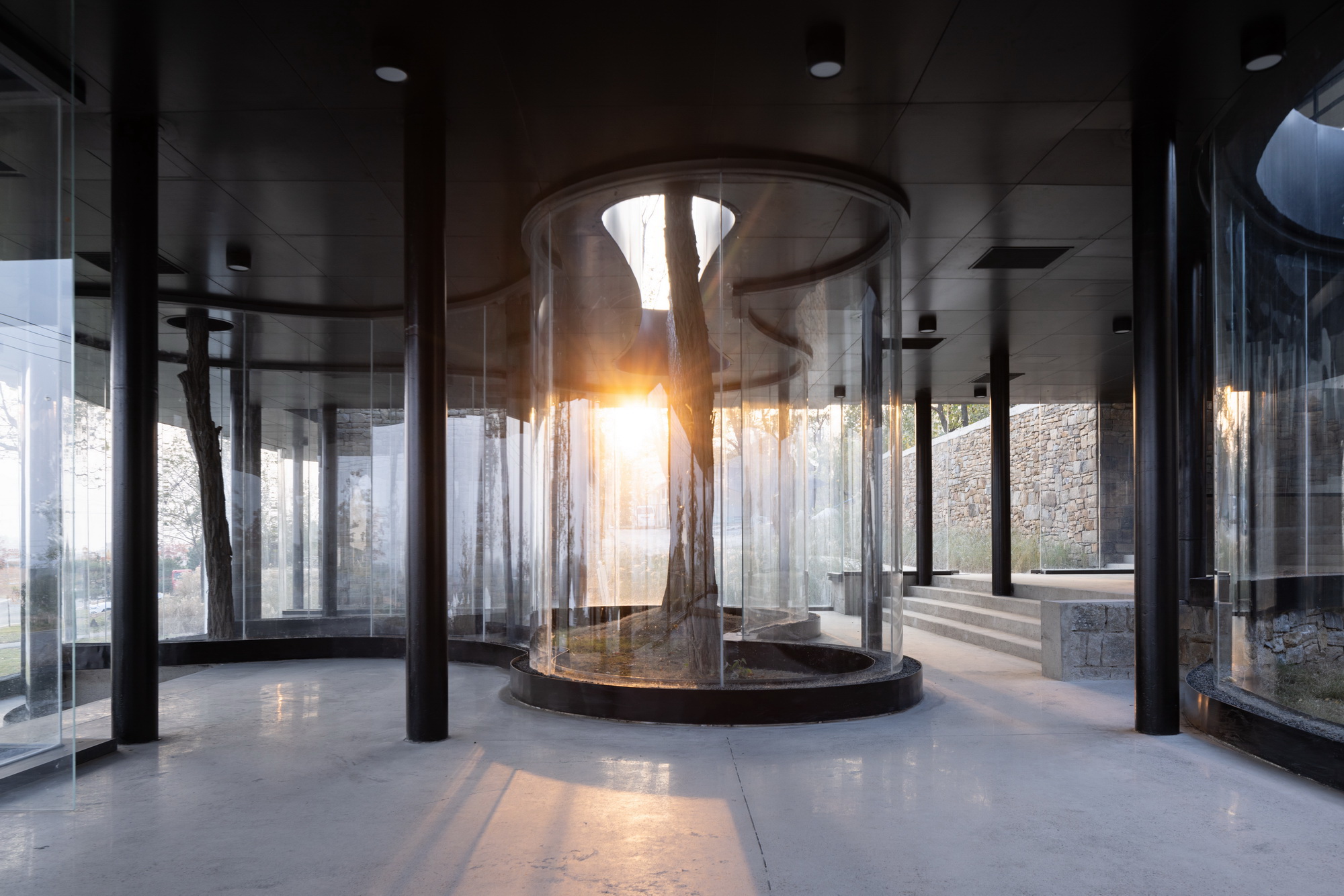
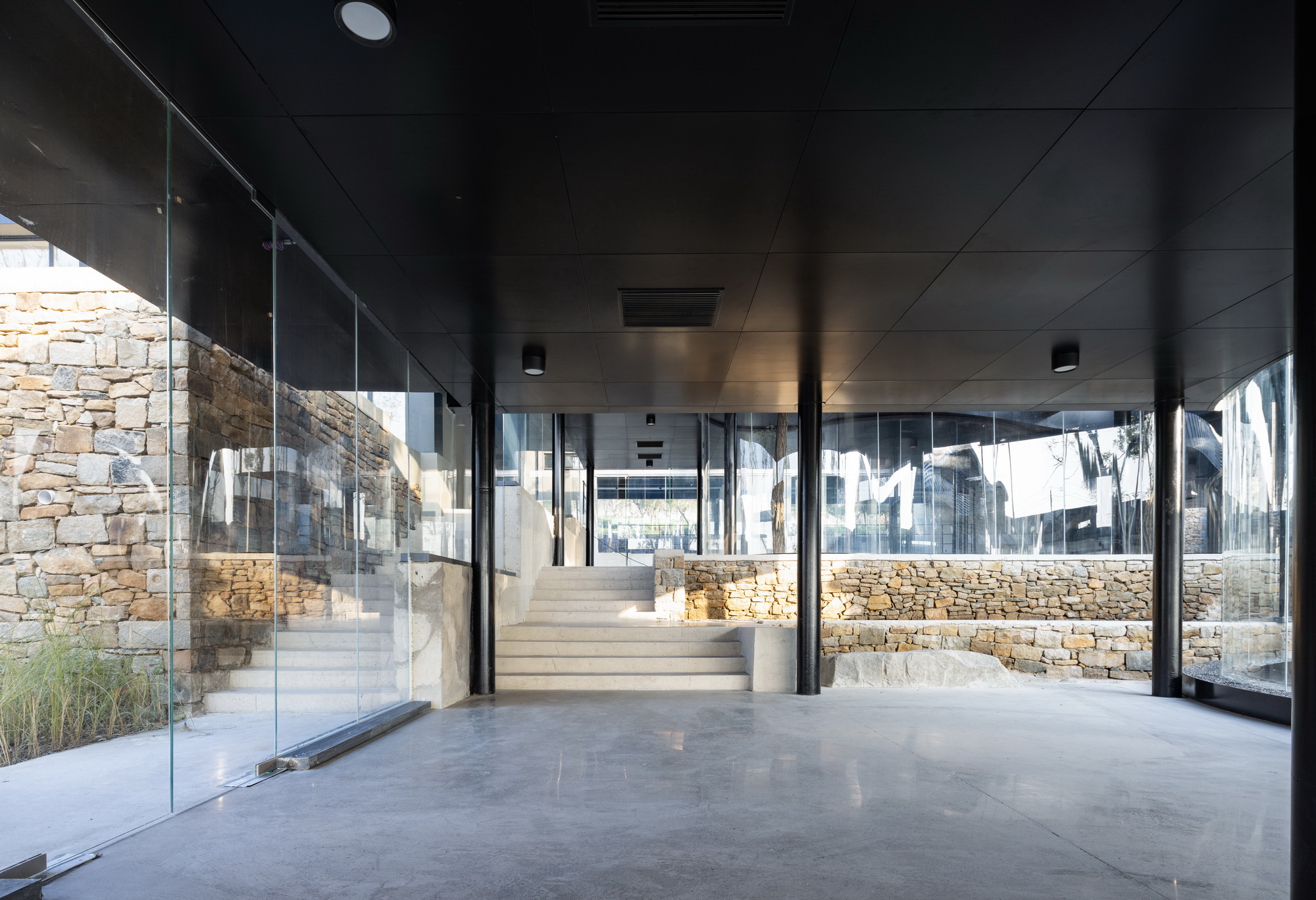
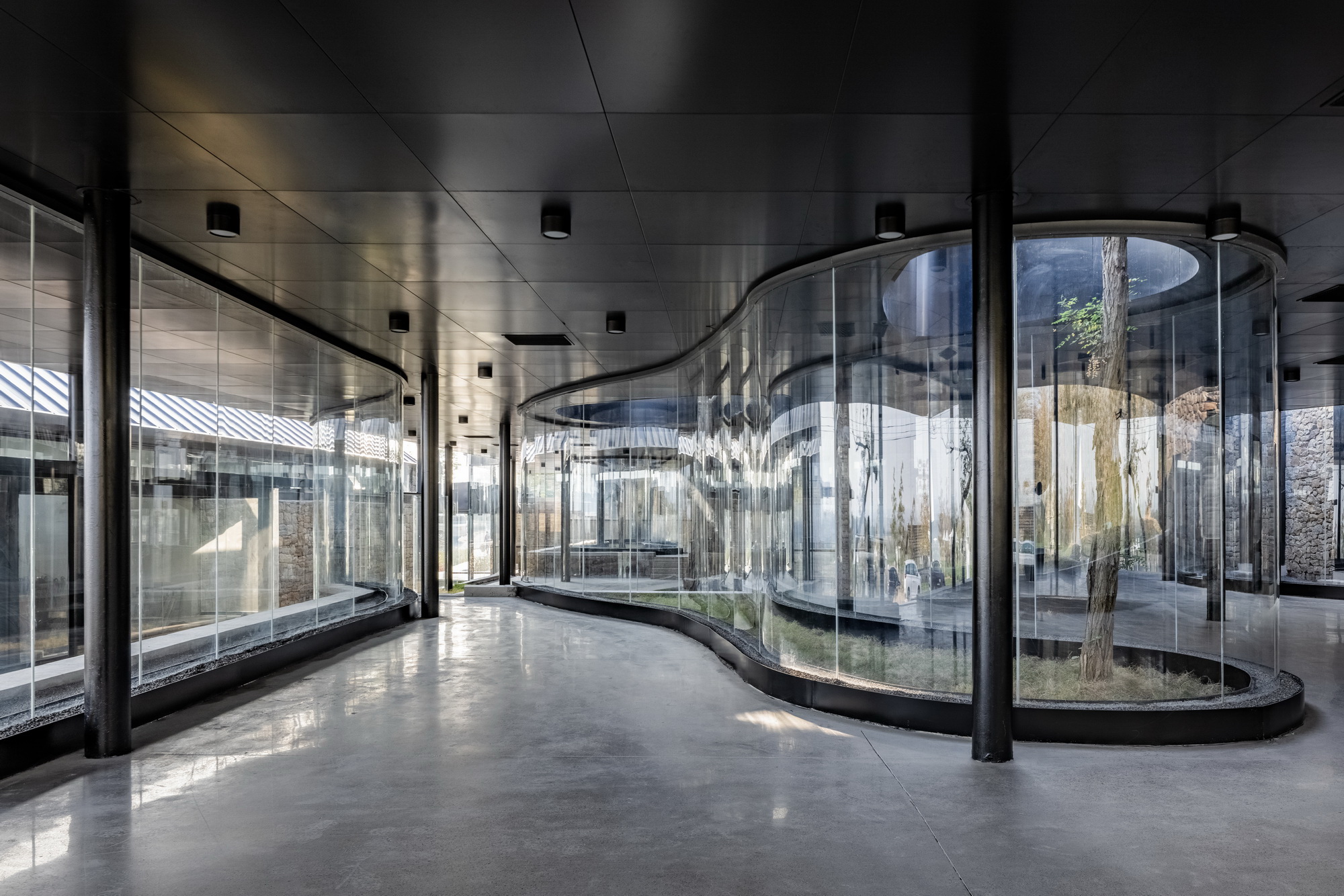
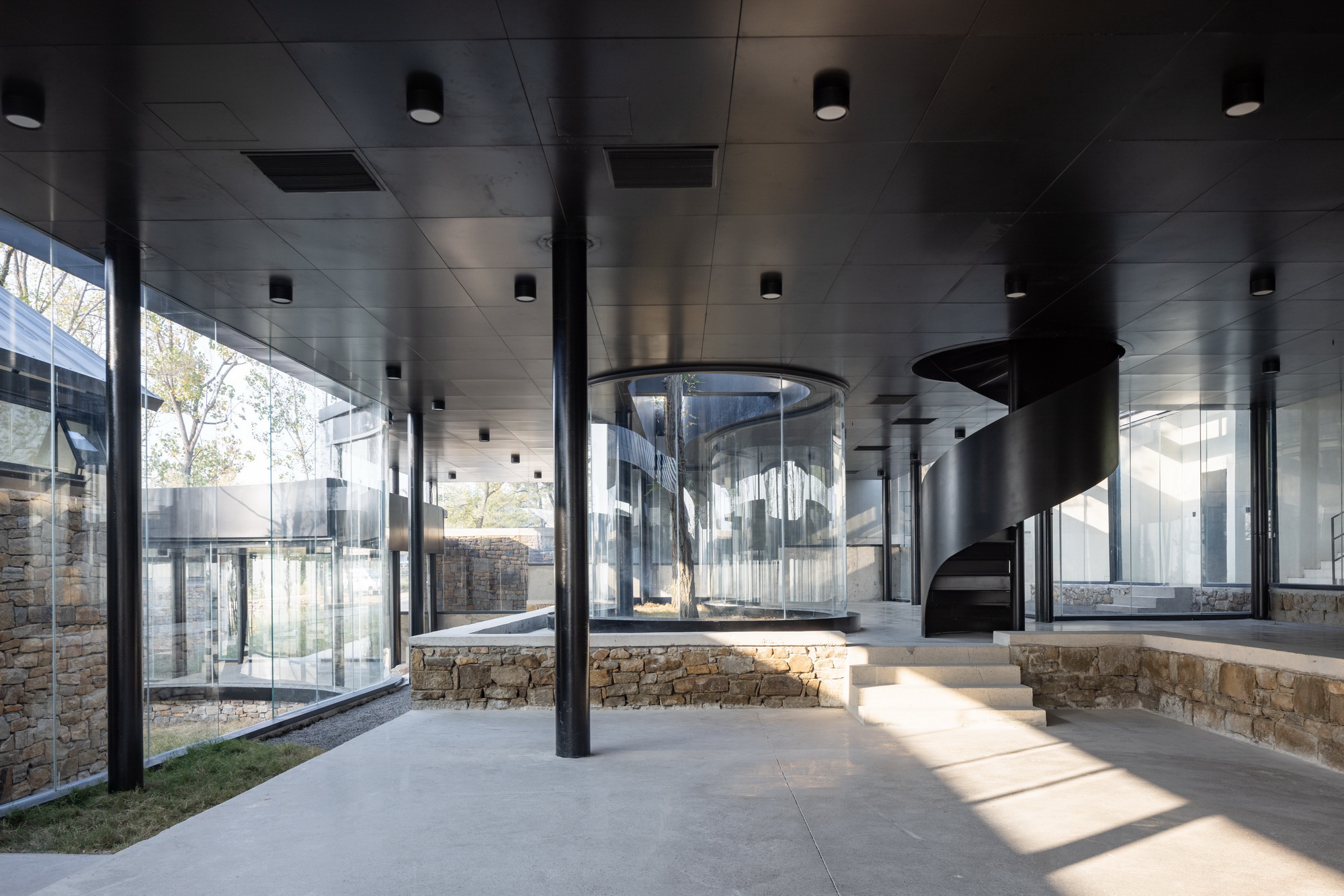
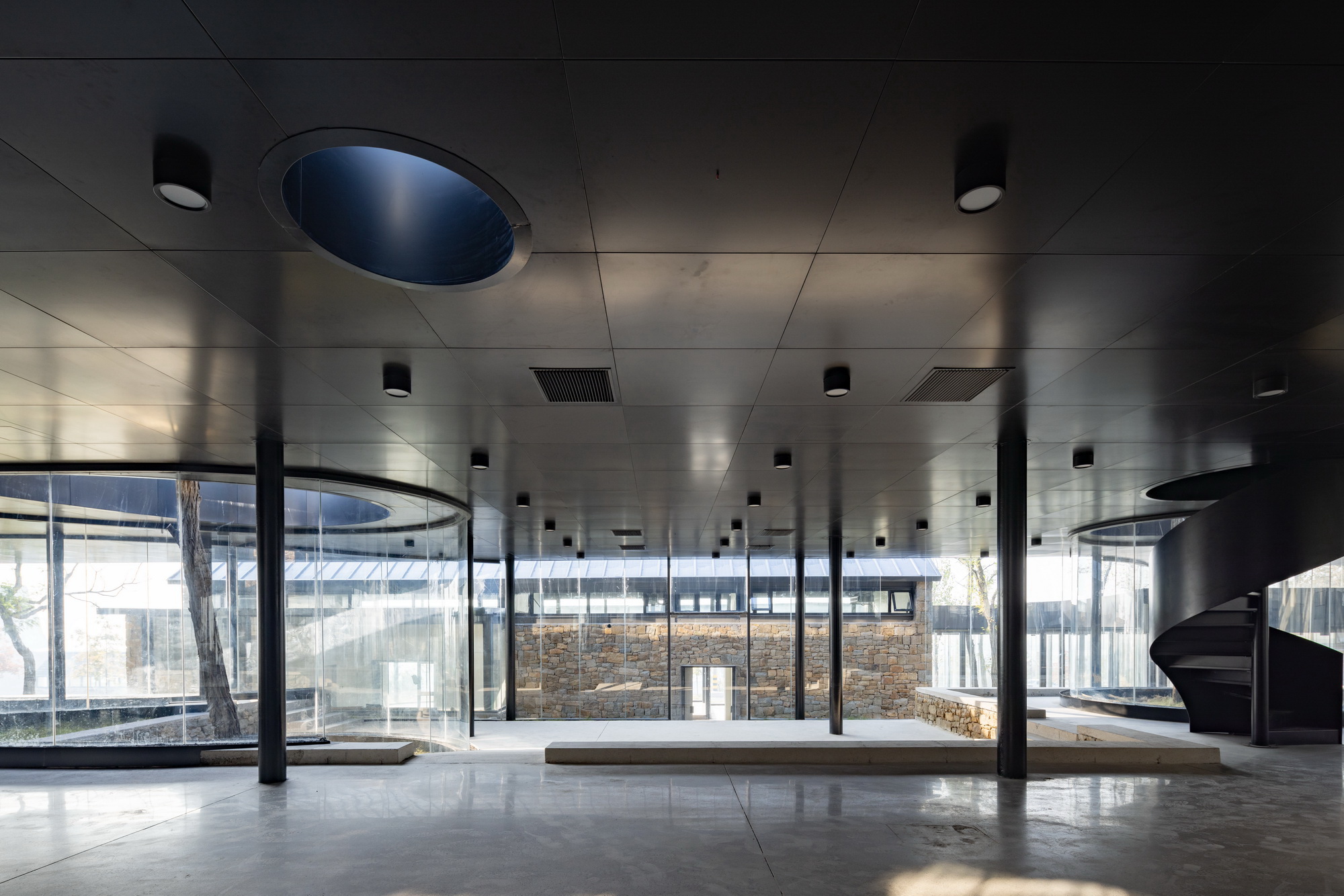

乡村建筑的漫游空间
乡村中最打动人的空间,莫过于有机形成、可以自由穿越的街巷,纵横阡陌的巷道连接建筑的交通空间,让乡村成为处处通达的迷宫。同样的行径感受也出现在柯布西耶的萨伏伊别墅中,柯布西耶变设计了从建筑内部到露台再到屋顶花园的漫游空间,让建筑成为一个连接室内和自然的完整小世界。很多老村和老城电影场景的打斗环节,主角往往从街道追到屋顶,在屋顶飞奔后忽然就顺着木楼梯,跳入围合建筑的花园里,然后再从中庭溜走,从街巷逃生。茶乡会客厅从中庭直达屋顶的两个旋转楼梯以及建筑外部从茶园直接到达建筑的屋顶平台的折型楼梯,实现了竖向的漫游空间。
The most impressive space in the countryside is the organically formed streets and lanes that can be freely traversed, and the traffic space connected to the building by the horizontal and vertical lanes makes the countryside a labyrinth with access to everywhere. The same feeling of walking paths also appeared in Corbusier's Villa Savoy, Corbusier changed the design from the interior of the building to the terrace and then to the rooftop garden roaming space, so that the building becomes a complete small world connecting the interior and nature. In many old village and old city movie scenes, the protagonist often chases the protagonist from the street to the rooftop, and after running on the rooftop, he suddenly jumps down the wooden staircase into the garden of the enclosed building, and then slips away from the atrium and escapes from the street. The two rotating staircases from the atrium to the roof of the Tea Village Parlor and the folding staircases from the tea garden outside the building directly to the roof terrace of the building realize the vertical roaming space.
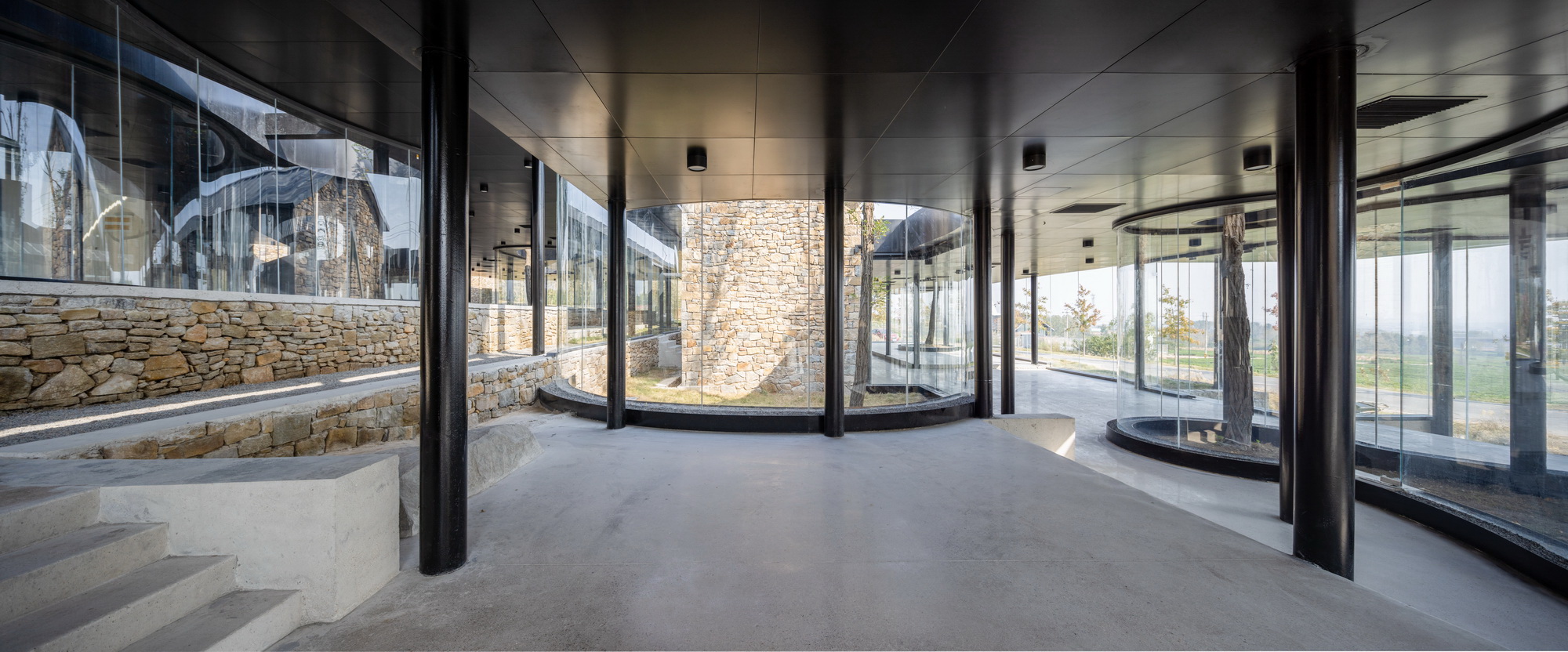
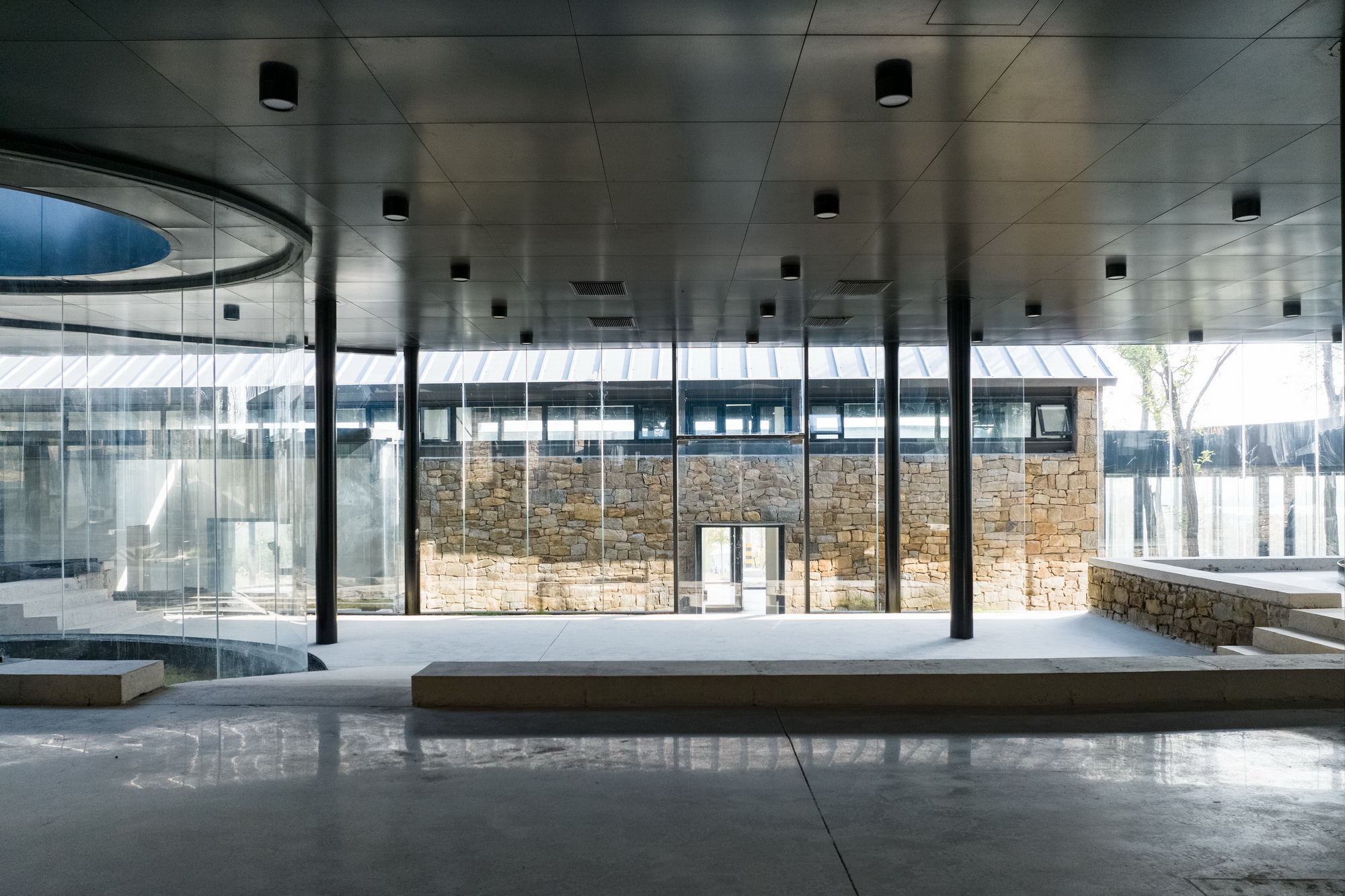
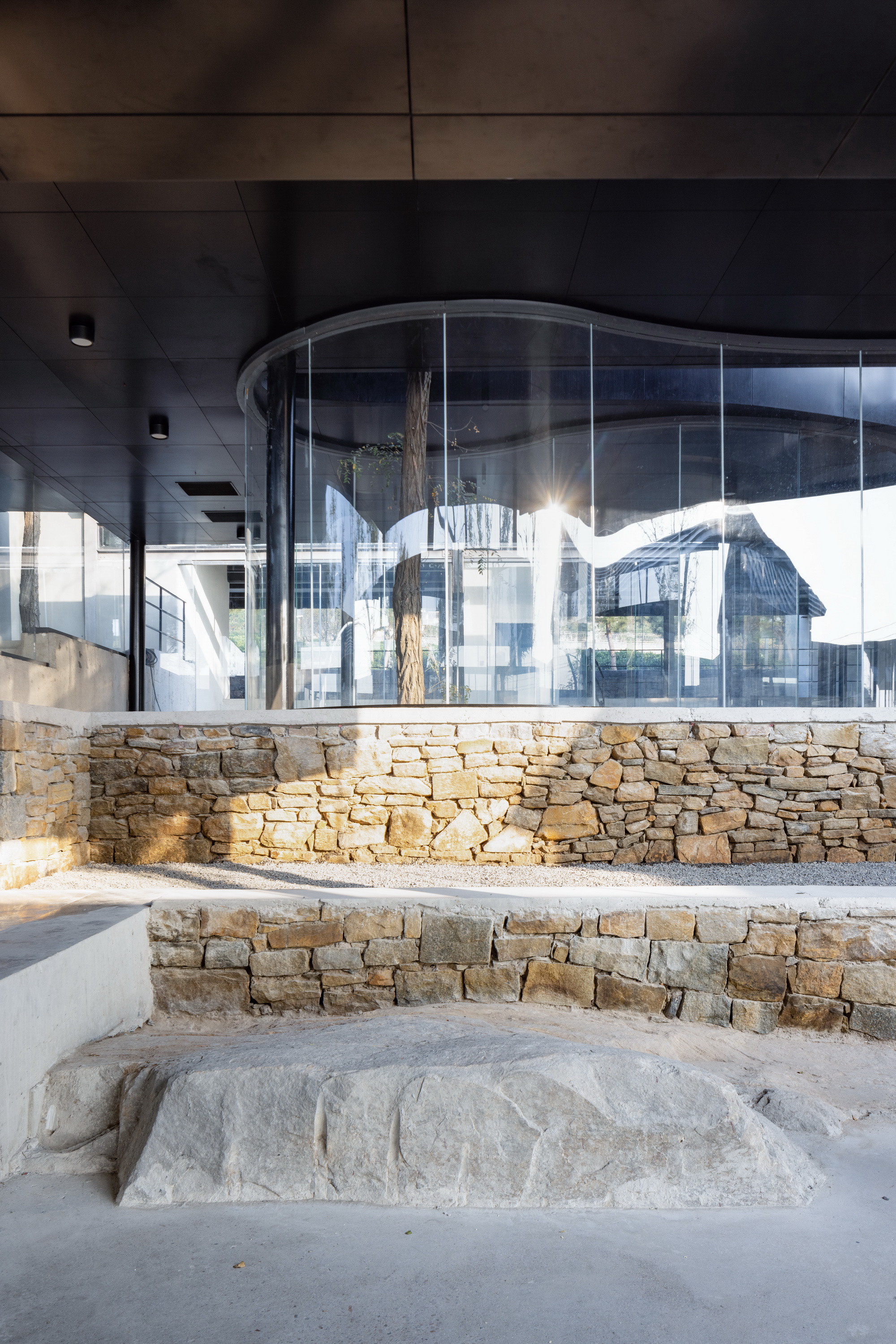
同时,漫游空间的水平性渗透让建筑充当起公共开放空间的作用。新建筑东南入口高挑的屋檐,紧邻大片茶园。入口屋檐开阔的檐下空间,为周边劳作的茶农提供临时庇护所,在雨天或者烈日的午后成为短暂的休憩地。
乡村建筑的漫游空间也模糊了建筑、景观和室内的界限,让建筑拥有自然的属性。内庭由建筑立面围合出的采光天井,避开了原场地的大树,留出天光,让出空间给大家在长出来的大树下休息,既体现了建筑空间的趣味性,也应对了乡村聚落的智慧,与自然形成的风进行对话。
At the same time, the horizontal penetration of the roaming space allows the building to function as a public open space. The high eaves of the southeast entrance of the new building are adjacent to the large tea garden. The open space under the eaves of the entrance provides a temporary shelter for the neighboring tea farmers, and a short resting place on rainy days or hot afternoons.
The roaming space of the rural building also blurs the boundaries between architecture, landscape and interior, giving the building a natural attribute. The inner court is enclosed by the building façade to create a light-filled patio that avoids the large trees on the original site, leaving skylight and giving space for people to rest under the growing trees, which not only reflects the interesting nature of the architectural space, but also responds to the wisdom of the rural settlement, dialoguing with naturally occurring winds.
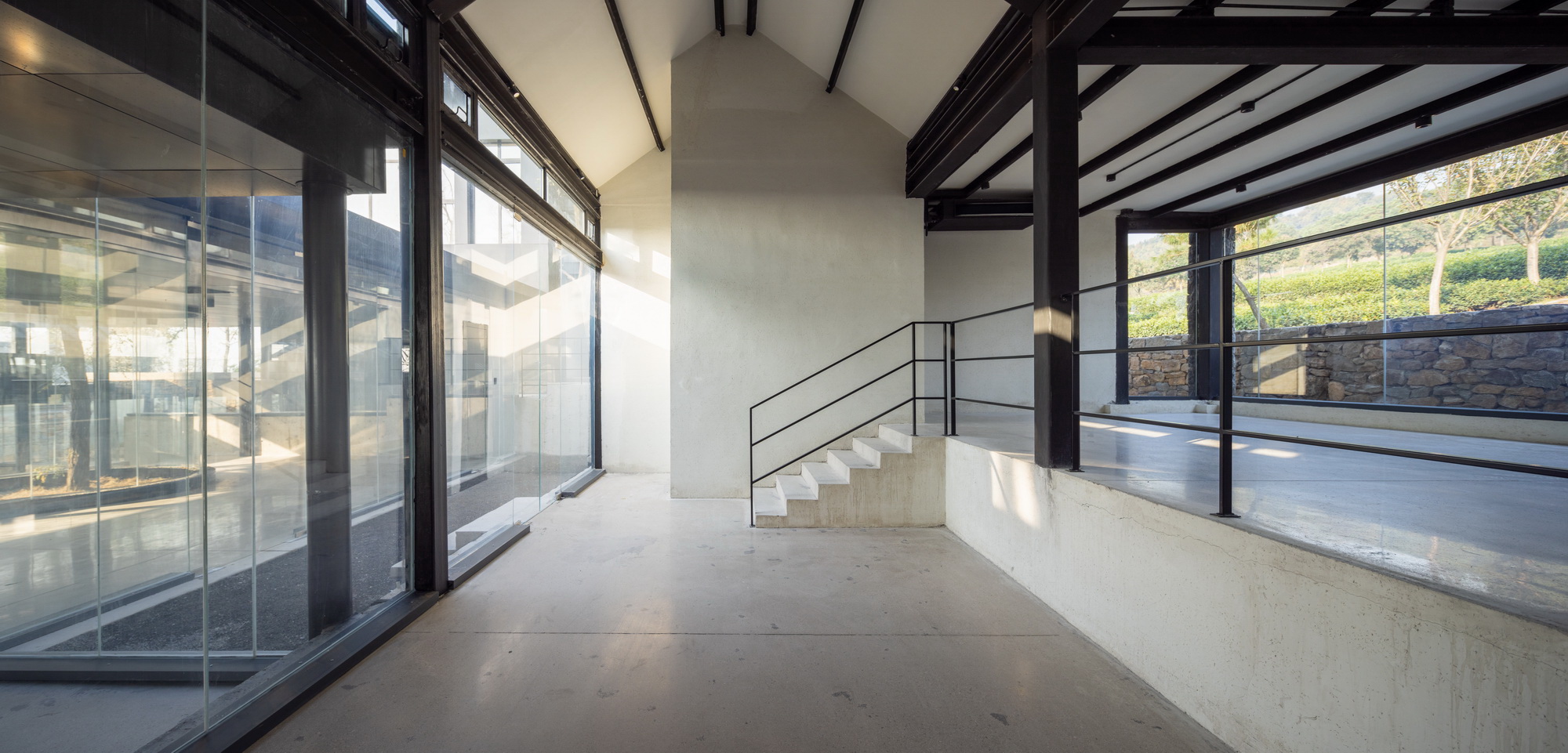
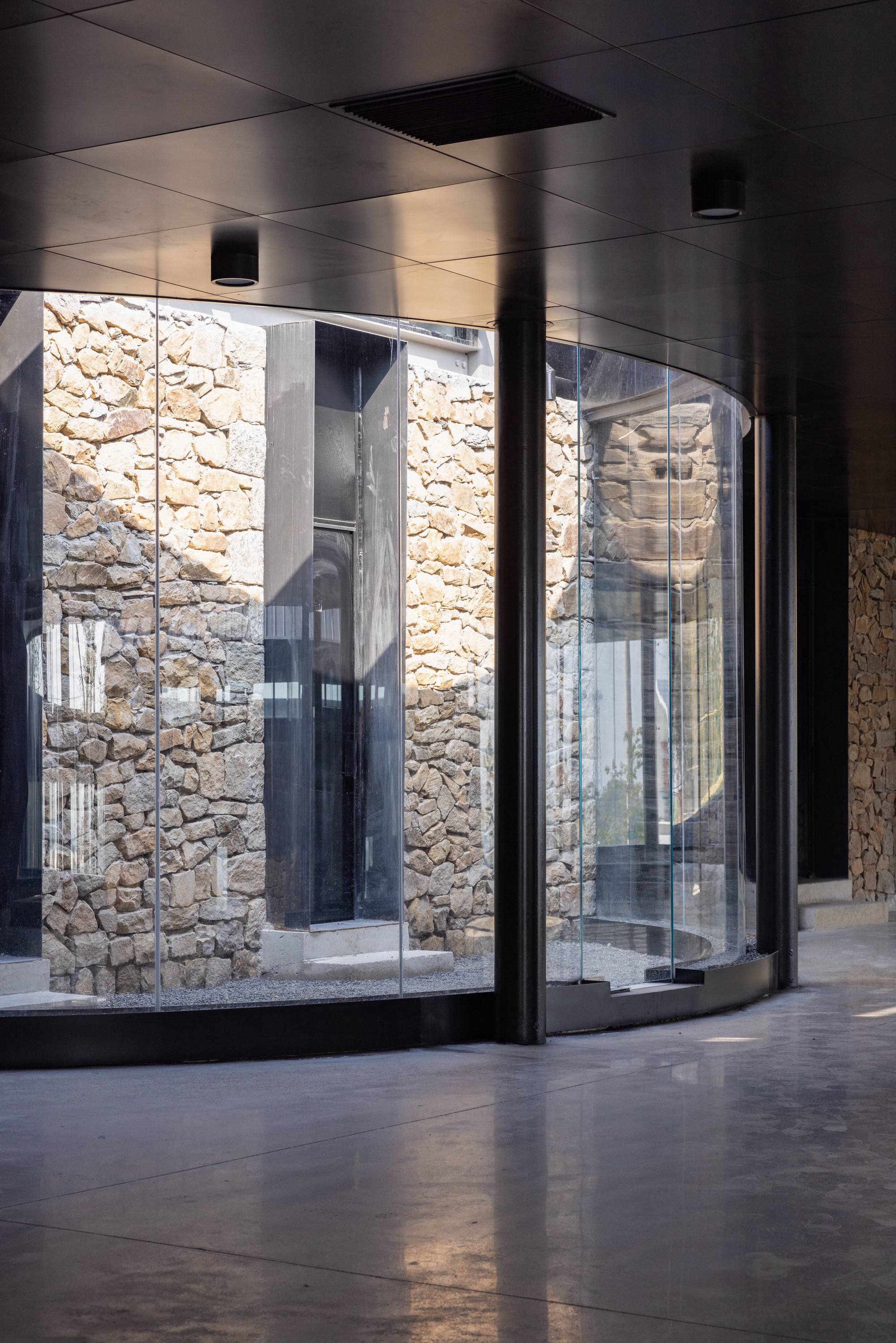
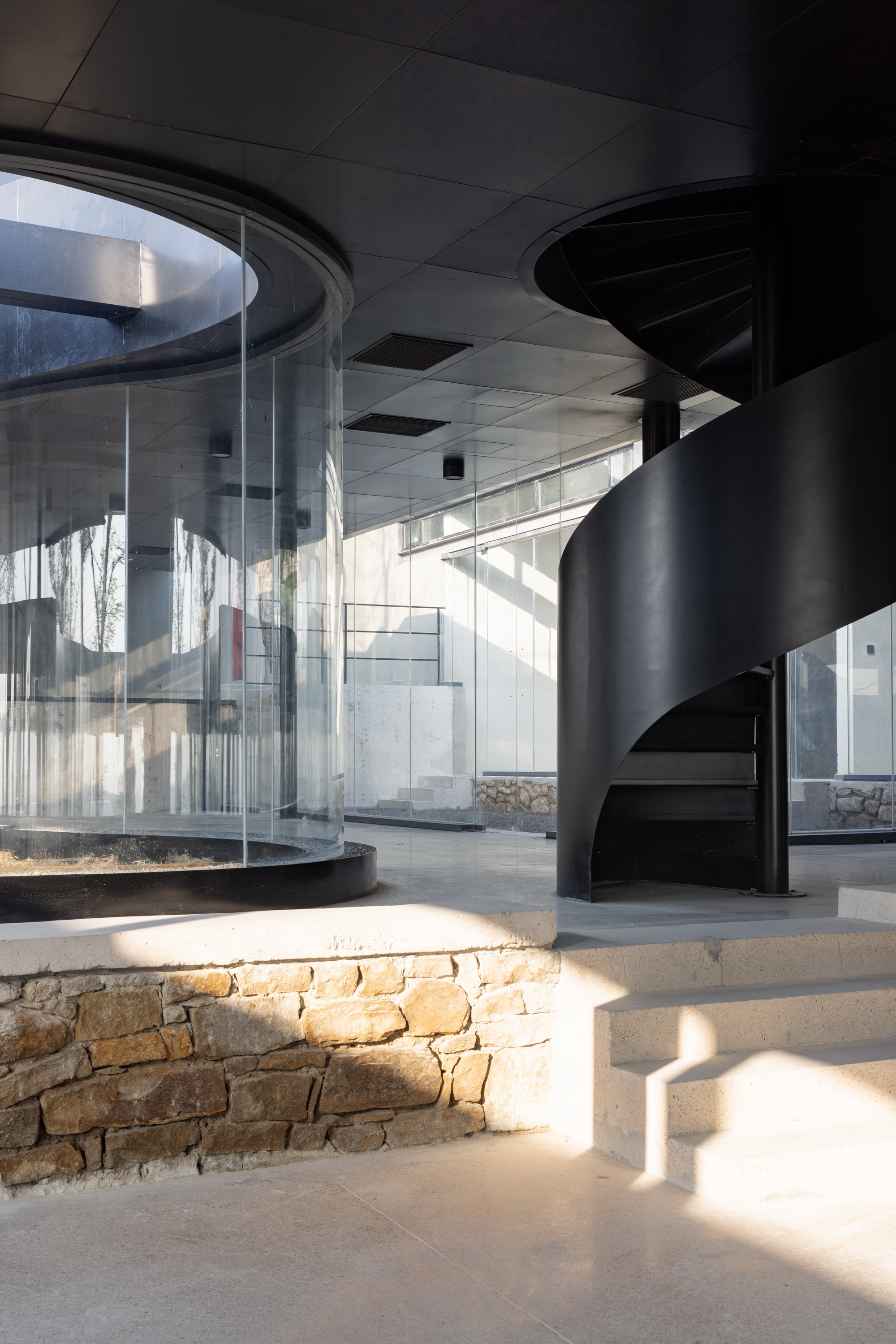
与乡土文化和自然的深度对话
乡村建筑实践是否能够成为一种新的建筑和景观实践类型?与乡土文化和自然的深度对话,会让未来的乡村建筑具有更持久的生命力。
对建筑和景观设计而言,地域建筑与乡土材料是当地人长时间和自然对话的结果,乡土文化更多体现在乡土材料和地域建筑的特色上。对地域乡土建筑的保育或者重建,可以在某种程度上保存这一区域的乡村记忆,这种基于当地人的集体记忆会产生共情和共鸣,也给陌生的观者以新认知。
Can rural architectural practice become a new type of architectural and landscape practice? A deep dialog with vernacular culture and nature will give future rural architecture a more lasting vitality.
For architecture and landscape design, regional architecture and vernacular materials are the result of a long time of dialog between local people and nature, and vernacular culture is more reflected in the characteristics of vernacular materials and regional architecture. Conservation or reconstruction of regional vernacular architecture can, to a certain extent, preserve the rural memory of the region, and this collective memory based on the local people will generate empathy and resonance, and also give unfamiliar viewers a new perception.
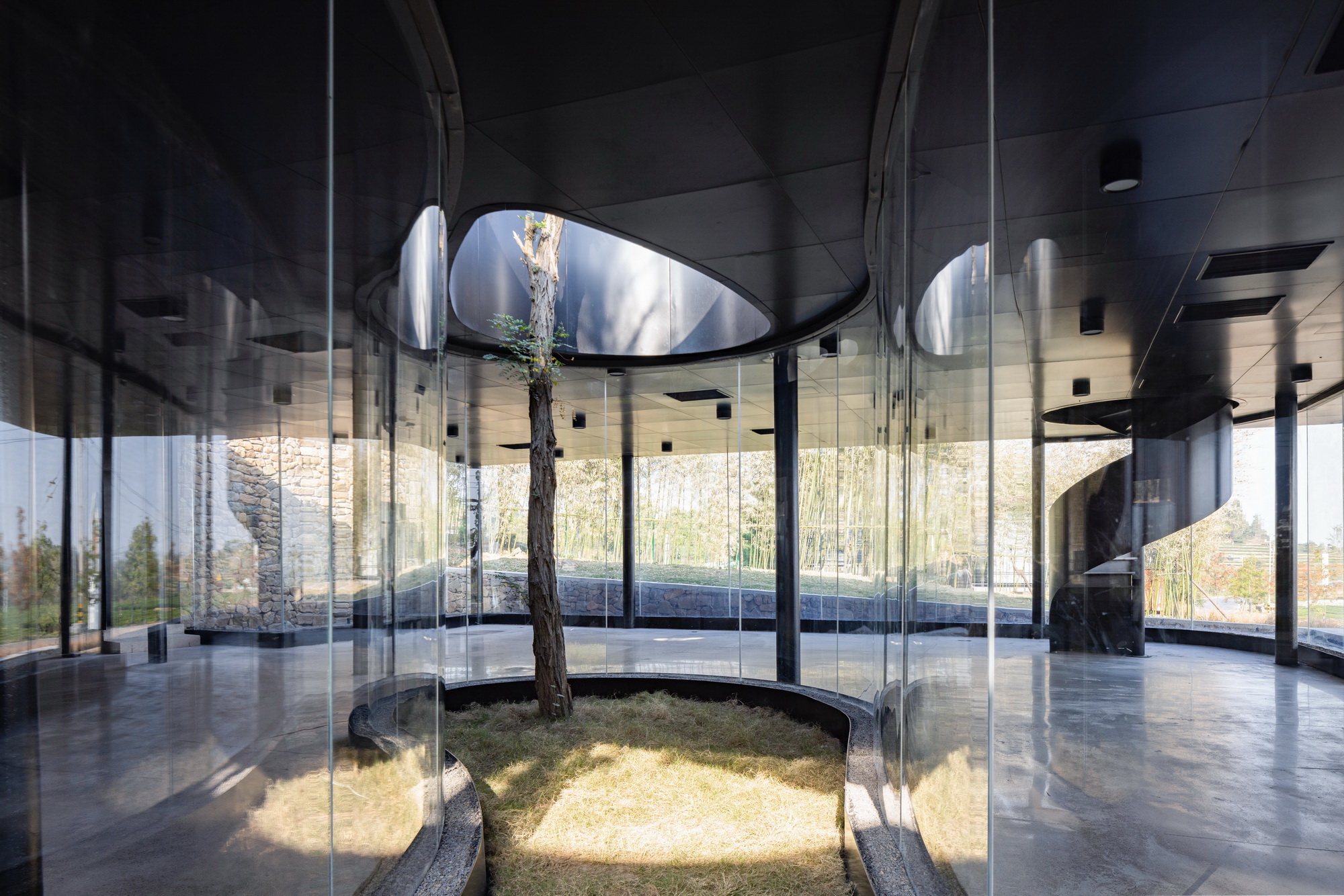
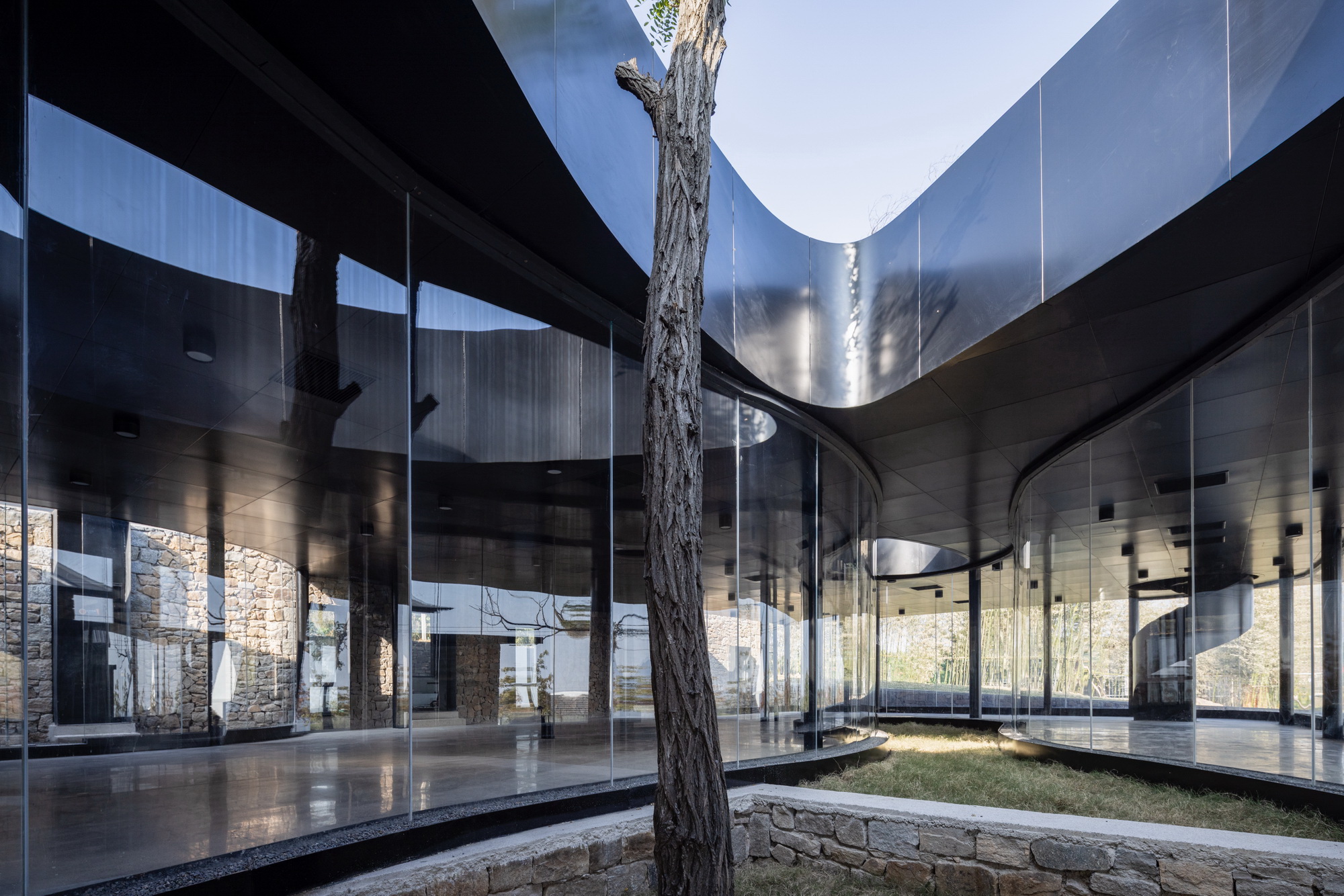
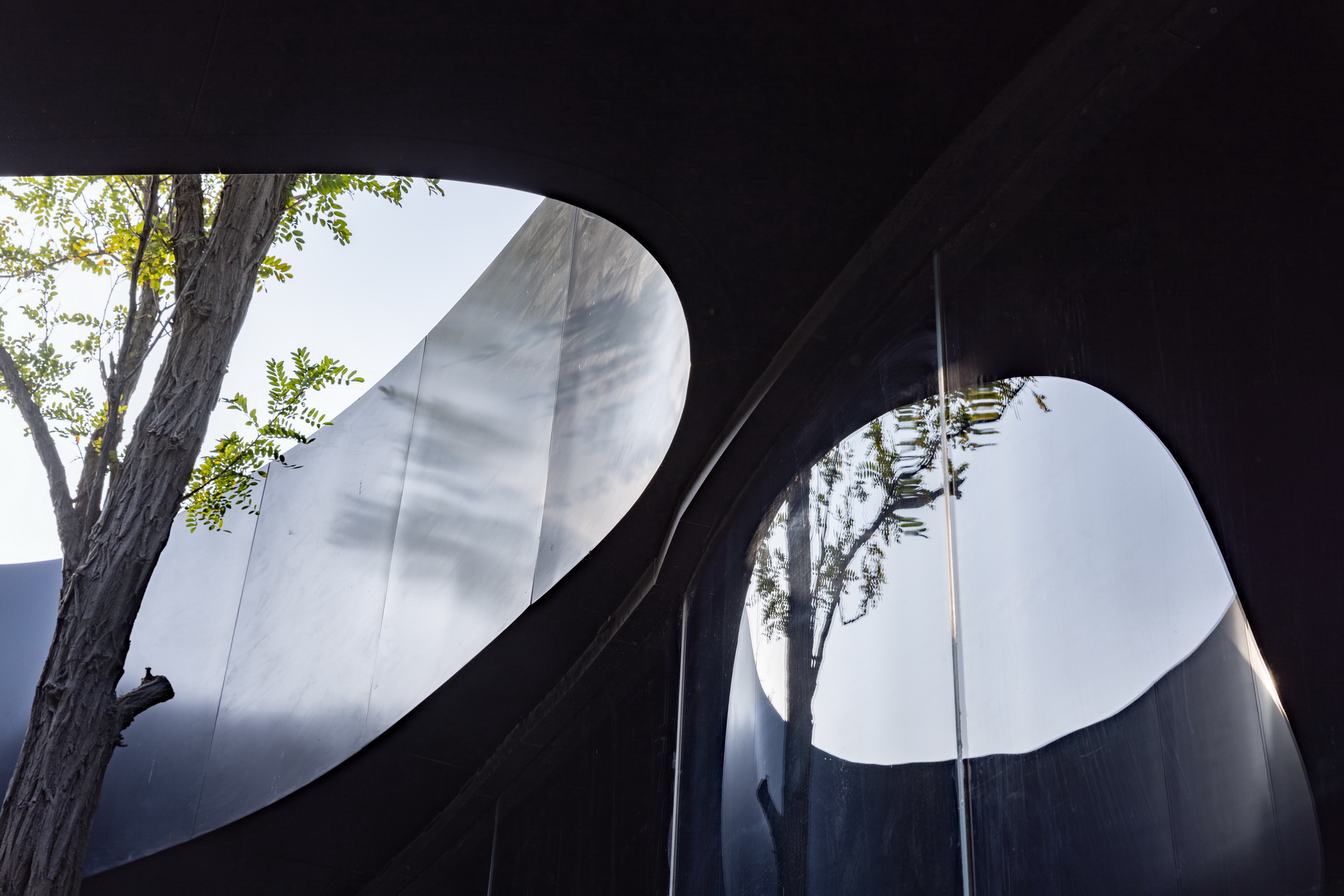
对建筑和景观施工而言,与乡土文化的对话同样体现在传承当地匠人手工艺,使用在地策略这一独特属性上。每一个新建筑的施工,都是不断打磨的过程。聘请村子里手艺精湛的石匠领工,基于几十年对当地材料和工艺的认知,更能充分凸显乡土材料的美。地面、台阶、矮墙的精细收边,反复细微打磨,呈现出手工之美。
For architecture and landscape construction, the dialog with local culture is also reflected in the unique attribute of inheriting the craftsmanship of local artisans and using local strategies. The construction of each new building is a process of continuous polishing. Hiring a skilled mason from the village to lead the work, based on decades of knowledge of local materials and craftsmanship, more fully highlights the beauty of the vernacular materials. The fine hemming of floors, steps, and low walls are repeatedly and finely polished to present the beauty of handwork.
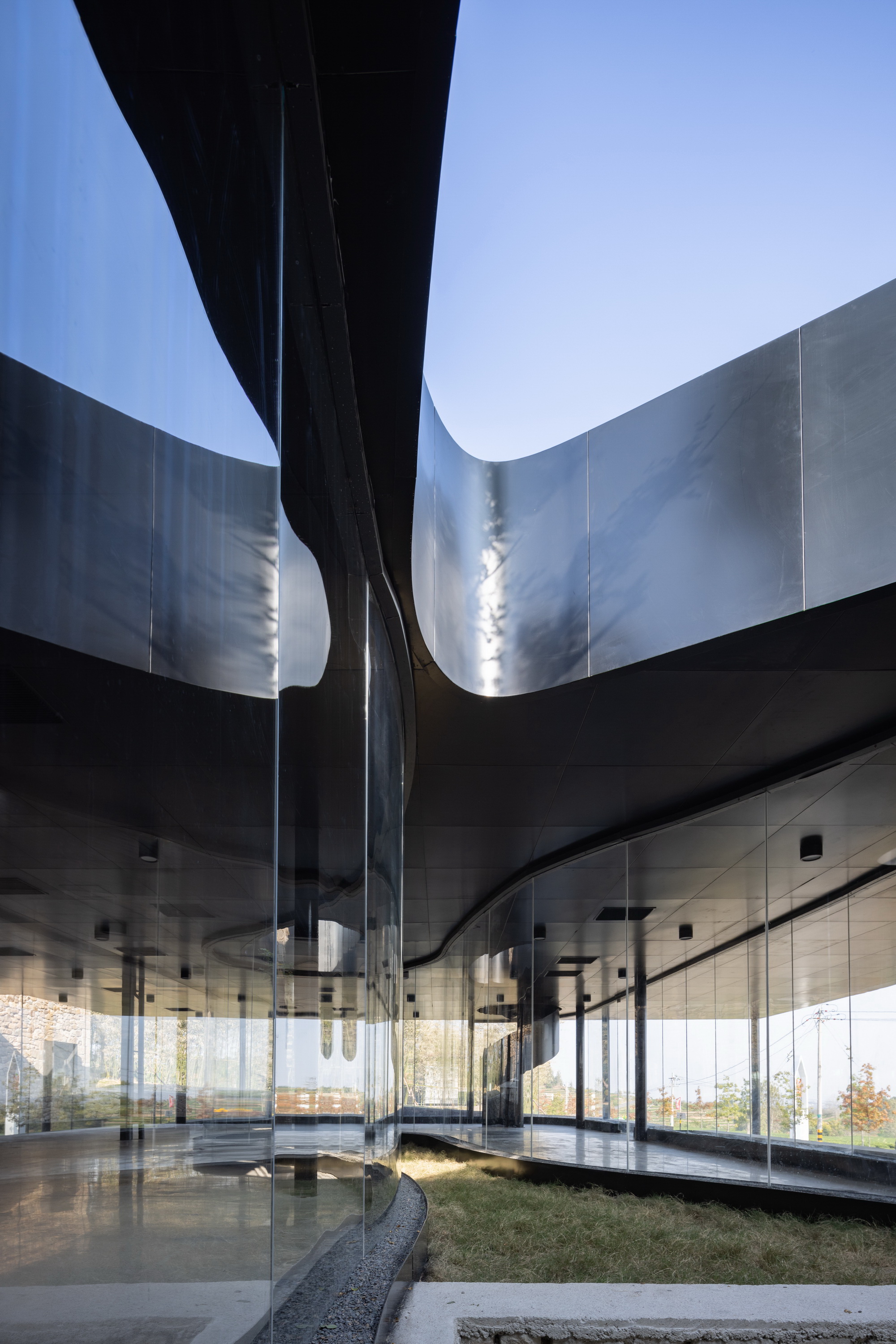
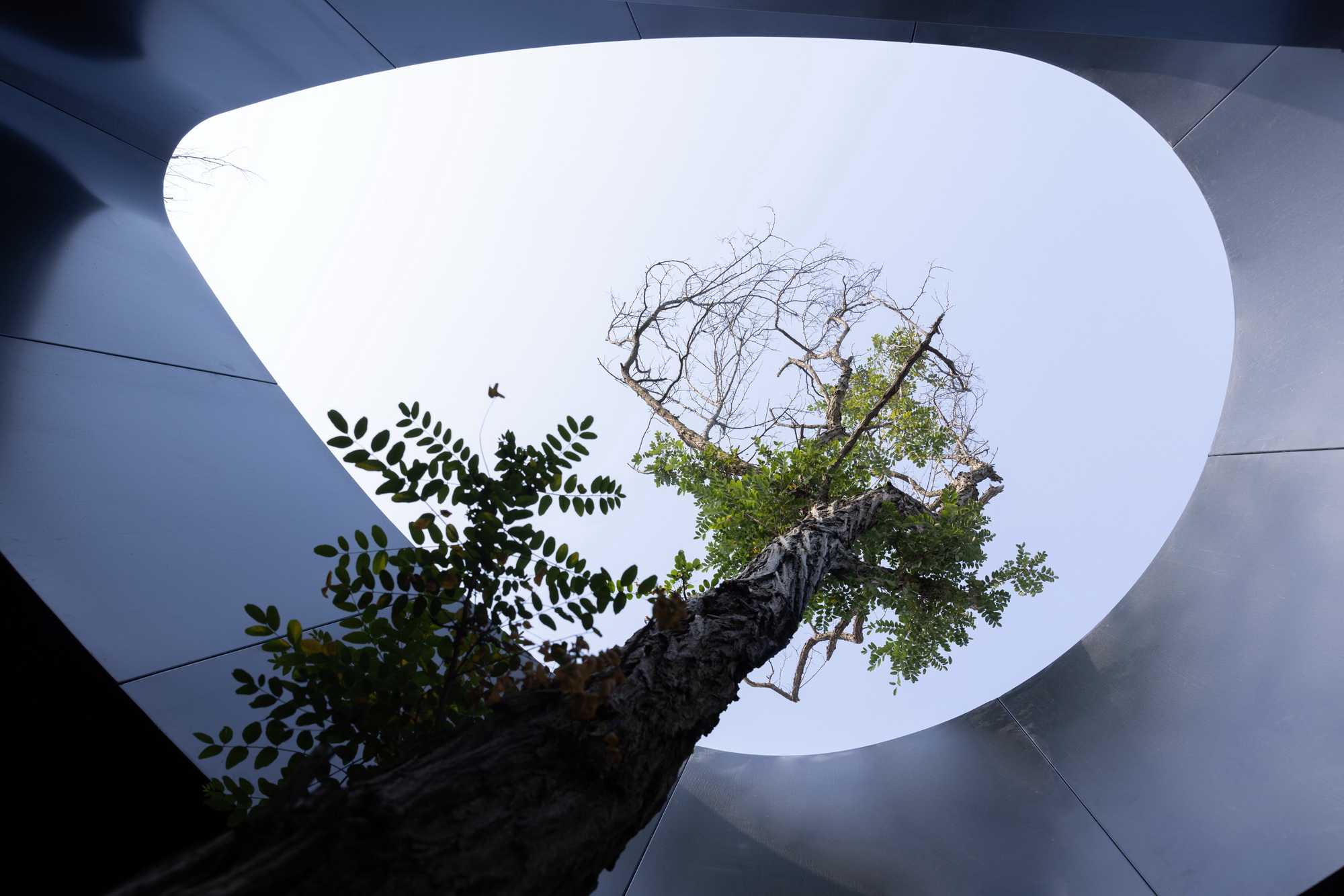
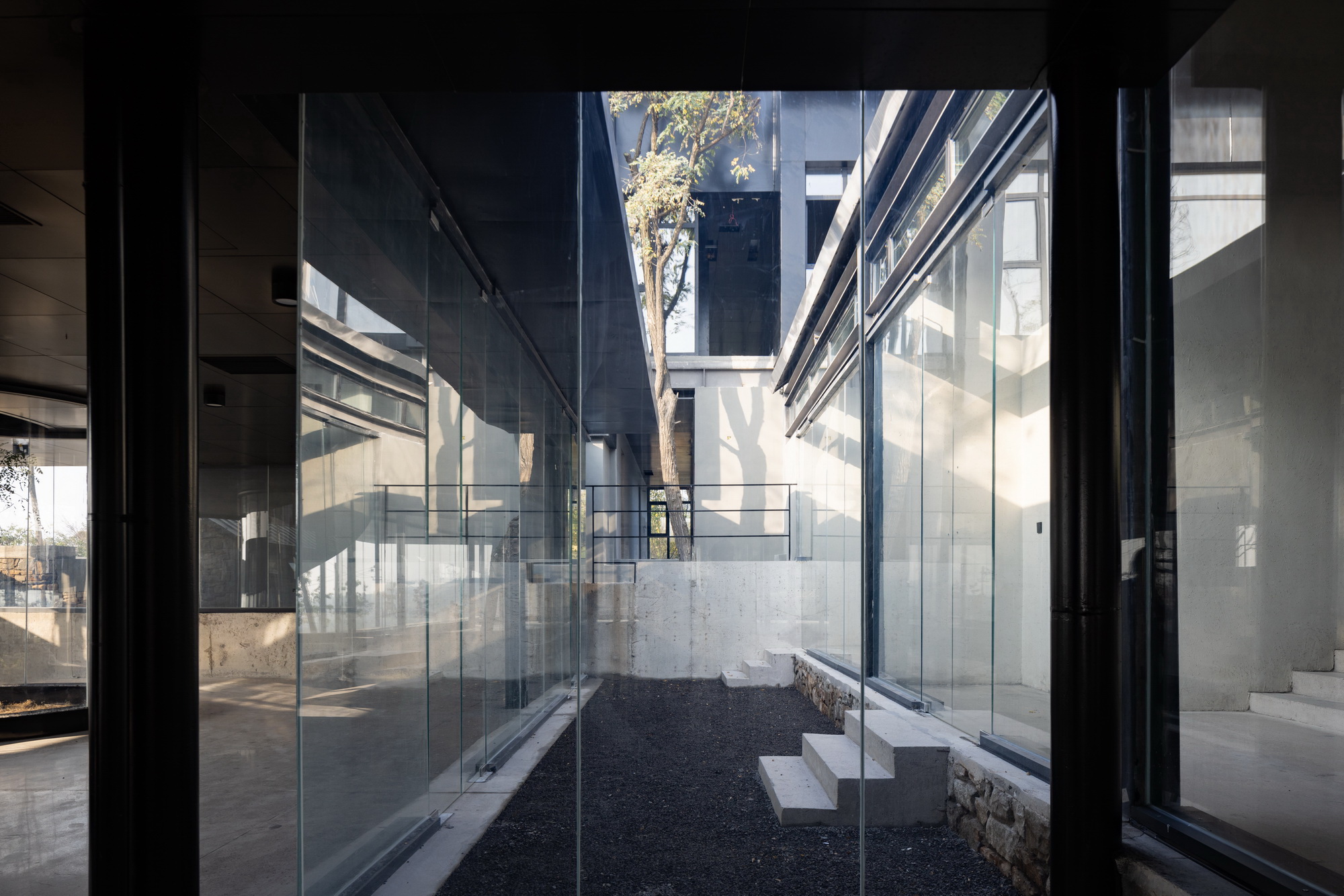
最重要的乡村建筑的灵魂,是要与真实的自然、场地内的草木、周边的山水田园对话。建筑为了更好地将人的视线引向周边的自然,不凸显和张扬建筑本身,反倒将其作为背景,立面采用通体黑色,地面浅灰色水磨石,让绿色的山水自然成为点睛的重点,将参与者注意力更多集中在周边田园。光、空气和雨雪等变化的自然现象和自然要素成为时间的记录者,设计也将其捕捉在建筑的墙体和内庭中,和建筑进行着持久的对话。
The soul of the most important rural architecture is to dialog with the real nature, the grass and trees on the site, and the surrounding landscape and fields. The building, in order to better draw people's attention to the surrounding nature, does not highlight and flaunt the building itself, but instead uses it as a background, with the façade in all black and the light gray terrazzo on the ground, so that the green nature of the mountains and water becomes the focus of the accent, and the attention of the participants focuses more on the surrounding fields and gardens. The changing natural phenomena and elements such as light, air, rain and snow become the recorders of time, and the design captures them in the building's walls and inner courtyards, engaging in an enduring dialog with the building.
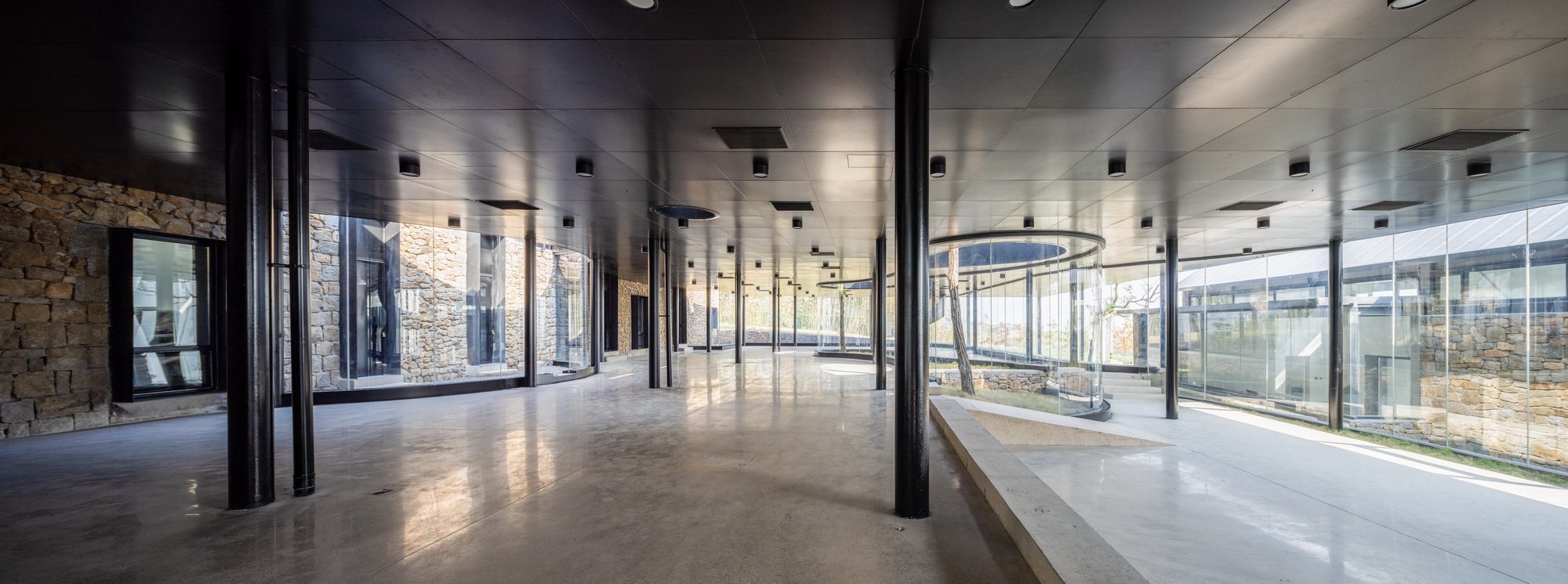
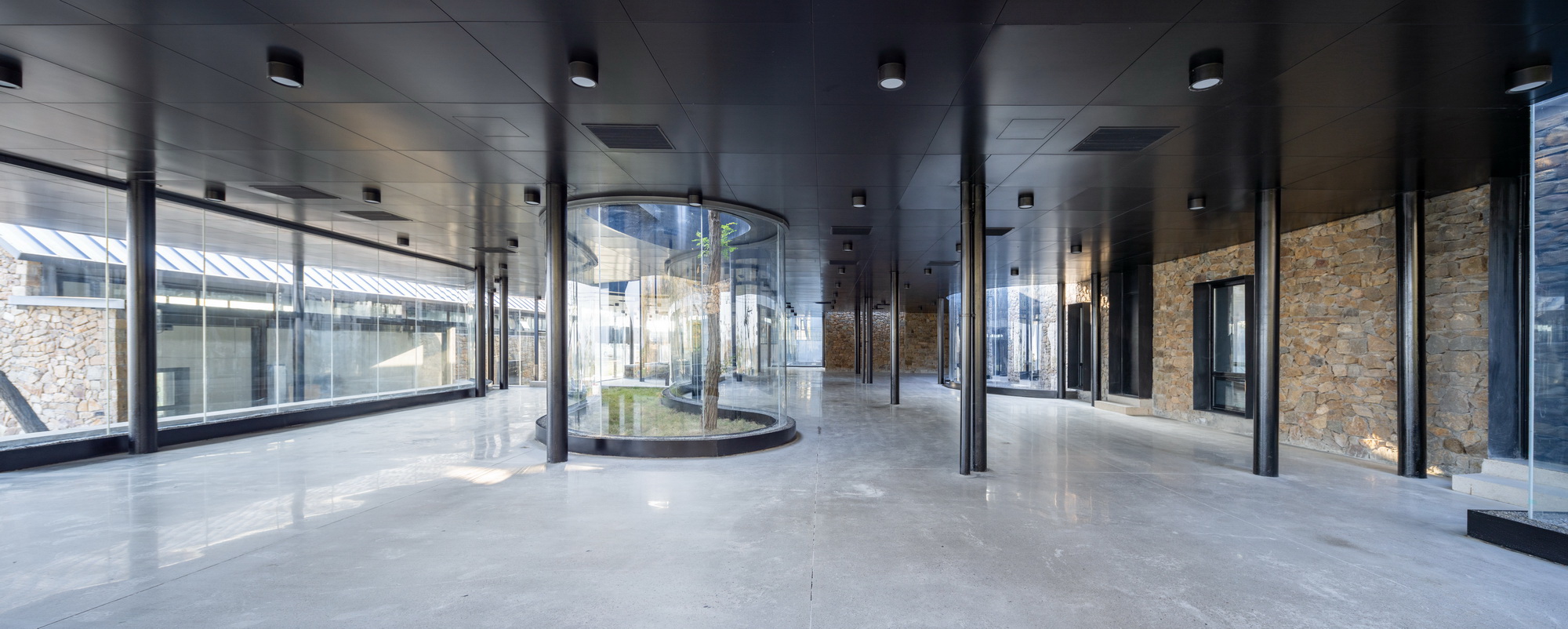
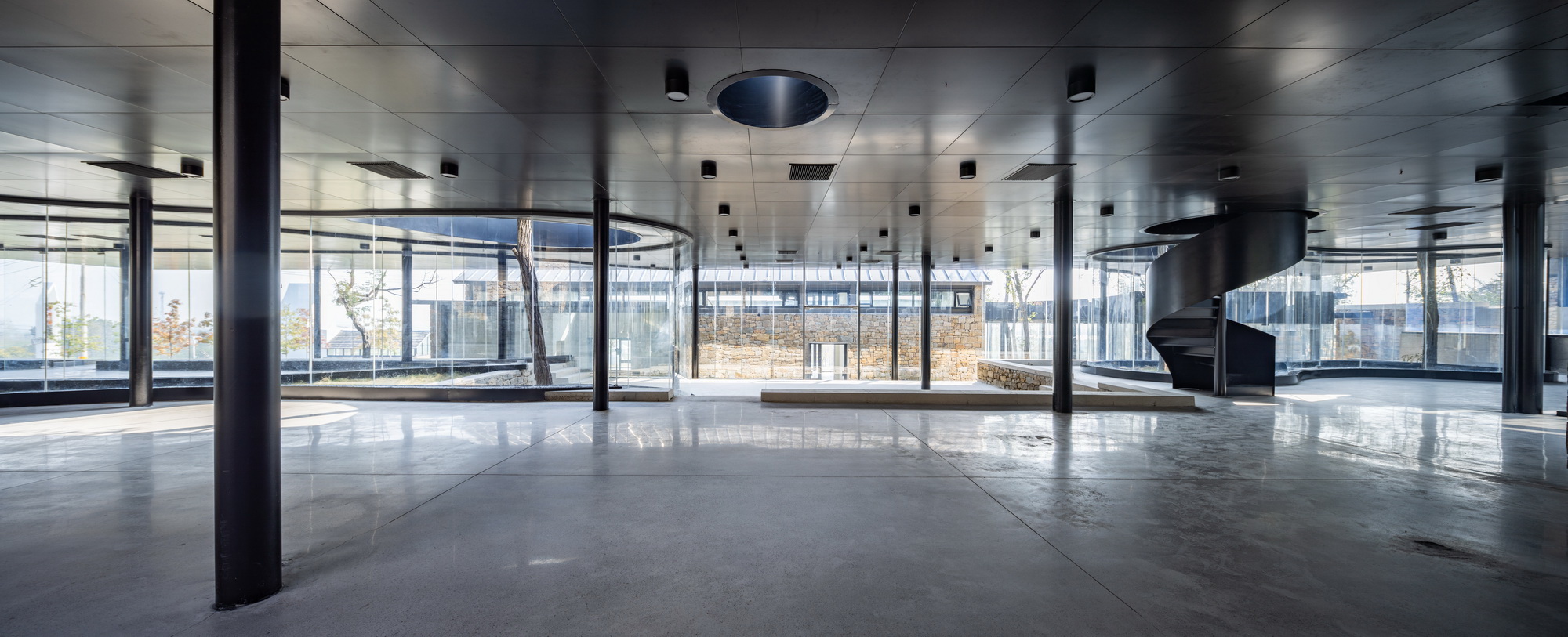
项目名称:日照朝元山茶乡会客厅
业主:山东日照岚山区巨峰镇后黄埠村
场地面积:3442㎡
建筑面积:1788㎡
设计单位:孔祥伟工作室
主持建筑师:孔祥伟
参与者:李国栋、崔峻、高灼见
设计与营造时间:2022年7月-2023年8月
摄影:直译建筑摄影
Project Name:Chaoyuan Mount. village lobby
Location:Shandong Rizhao huagnbu village
Clients: Shandong Rizhao huagnbu village
Site area:3442㎡
general area: 1788㎡
Design Company: Kong Xiangwei Studio
Lead architect: Kong Xiangwei
Participants: Li Guodong, Cui Jun, Gao Zhuojian
Design period: July2022—Aug 2023
Photography: Archi-translator studio